Schatzjäger aufgepasst – die 5 schönsten Flohmärkte in Dresden
Die 5 besten cafés in dresden, 5 saunen, wo du dich in dresden aufwärmen kannst, winter ist aschenbrödelzeit – ausstellung im schloss moritzburg, längst vergessene orte – das neustadt art festival, so lebt dresden, das online-magazin für dresden: wohnen und leben in der landeshauptstadt sachsens.
- Google Plus
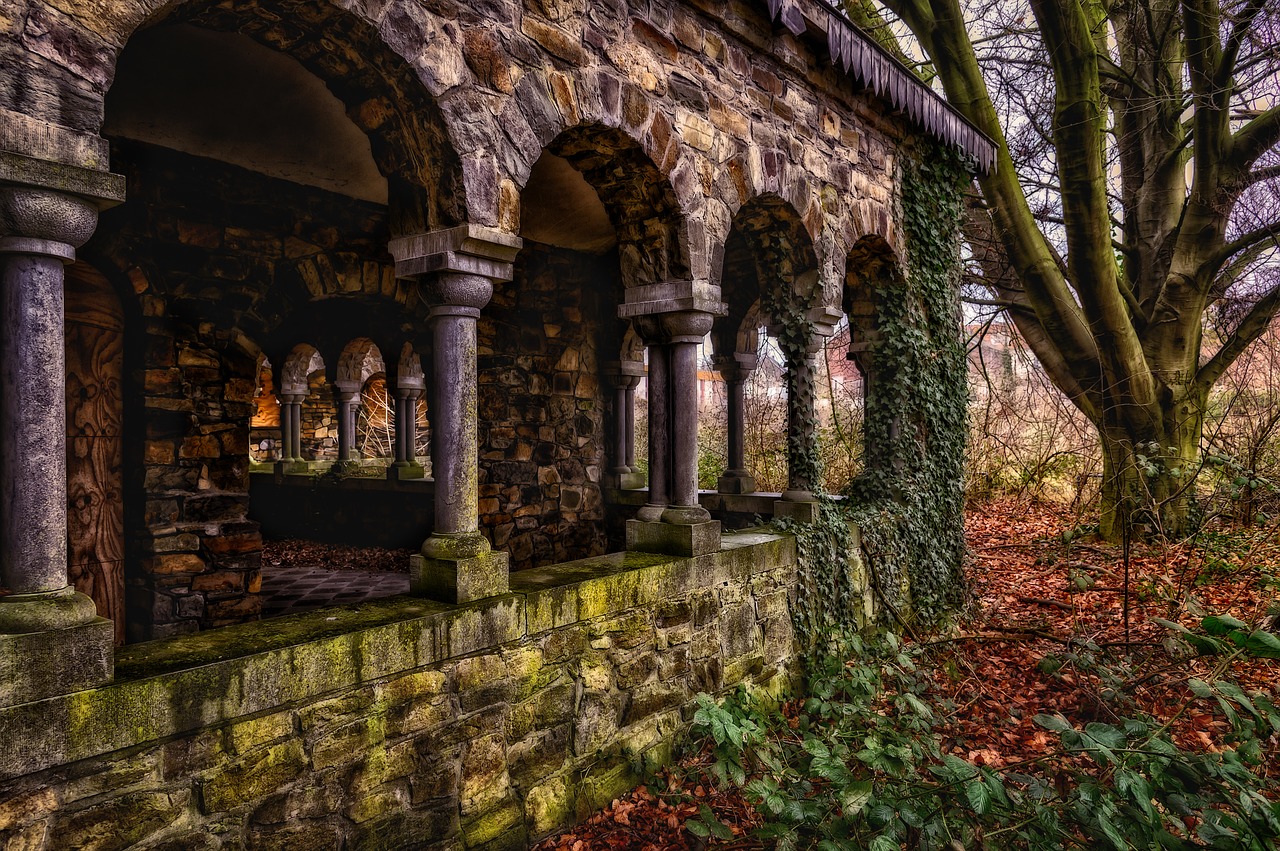

Lost Places in Dresden – vergessene Orte der Stadt entdecken
Aufregend, mysteriös, abenteuerlich – das Entdecken von „vergessenen Orten“, an denen die Zeit still zu stehen scheint, hat über die Jahre hinweg immer mehr Beliebtheit erlangt. Geschichte hautnah erleben, in vergangenen Epochen stöbern und spannende Orte neu und aus nächster Nähe zu entdecken macht den Reiz des Unterfangens aus. Wir möchten euch einige dieser Orte in Dresden vorstellen.
Doch Achtung: Bitte unterschätzt nicht das Risiko, alte Gebäude bergen Einsturz- und Verletzungsgefahren. Seid also stets vorsichtig! Außerdem: Bevor es auf Entdeckungsreise geht, stellt bitte sicher, dass ihr den Ort und das Grundstück legal betretet. Fragt vorher auf bei den Eigentümern an, holt eine Erlaubnis ein oder nutzt das Angebot und bucht eine Tour .
1.Villa Kolbe
Die Villa Kolbe steht im Dresdner in Alt-Radebeul wurde in 1890-91 erbaut. Sie wird dem Stil der Neorenaissance zugeordnet und zählt zu den architektonisch eindrucksvollsten Gebäuden Radebeuls. Die Villa ist in eine Parkanlage eingebettet, der als Englischer Landschaftsgarten konzipiert ist. Seit 1995 ist die sanierungsbedürftige Villa mit 66 Zimmern ungenutzt und auch die Gartenanlage verwildert seither. Ab 2016 begannen Gespräche mit der Eigentümergemeinschaft der Villa und der Stadt Radebeul um eine Wiederbelegung des Anwesens. Die Stadt wollte jedoch einer Bebauung eines nicht-denkmalgerechtem Wohneinheiten-Neubau nicht Stand geben. Seitdem halten die Gespräche und Streitigkeiten an. Die Stadt ist scheinbar bereit Zugeständnisse zu machen was einen Anbau betrifft, so bleibt es spannend was aus der Villa wird und wann Arbeiten beginnen werden. Die Villa Kolbe ist nicht für die Öffentlichkeit zugänglich, doch eventuell gibt es eine Chance über die Eigentümergemeinschaft oder die Stadt eine Zugangserlaubnis zu erhalten. Bei einem so schönen Bau, ist es ein Versuch wert.
Adresse: Zinzendorfstraße 16, 01445 Radebeul
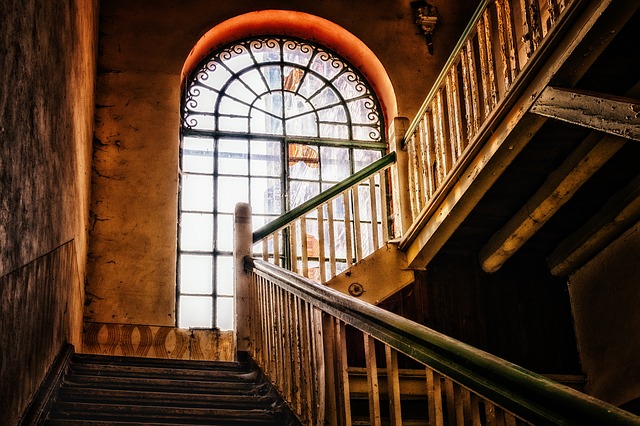
2. Malzfabrik Dresden Niedersedlitz
Die Malzfabrik der Gebrüder Pick galt zu seiner Zeit als modernste Brauerei Sachsens und eine der größten Malzfabriken Deutschlands. Der 1873 bis 1875 erbaute Gebäudekomplex setzt sich aus drei Bauabschnitten zusammen. Zu DDR-Zeiten war der Betrieb Teil des VE Getränkekombinats Dresden. Seit mittlerweile fast 30 Jahren steht die Malzfabrik nun leer und gleicht zunehmend einer Ruine. Die Fabriktürme gelten als Wahrzeichen des Industriebaus und werden von den Niedersedlitzern liebevoll „Max“ und „Moritz“ genannt. Einige Zeit lang galt eine Sanierung und Nutzung als Wohnanlage durch einen schwäbischen Unternehmer als wahrscheinlich, doch ist unklar was aus diesem Plänen geworden ist. Vermutlich haben die Bürokratie und die zahlreichen Auflagen, die mit der Sanierung eines denkmalgeschützten Gebäude einhergehen die Pläne des Investors durchkreuzt. Aktuell gibt es keine Pläne einer Sanierung und die Zukunft des Gebäudekomplexes ist ungewiss.
Das Gelände der Malzfabrik ist nicht zugänglich, alle Tore sind mit Ketten und Schlössern gesichert, doch auch von außen sind einige tolle Fotoaufnahmen möglich.
Einige Zeit über war das Gelände der Malzfabrik auf einer Immobilienplattform gelistet und ist nun noch im Archiv zu finden. Vielleicht ein Anzeichen? In jedem Fall findet man hier einen ersten Hinweis zu einem Kontakt.
Adresse: Straße des 17. Juni 21, 01257 Dresden
Das Immobilienangebot zur Alten Malzfabrik (Archiv) findet ihr hier .
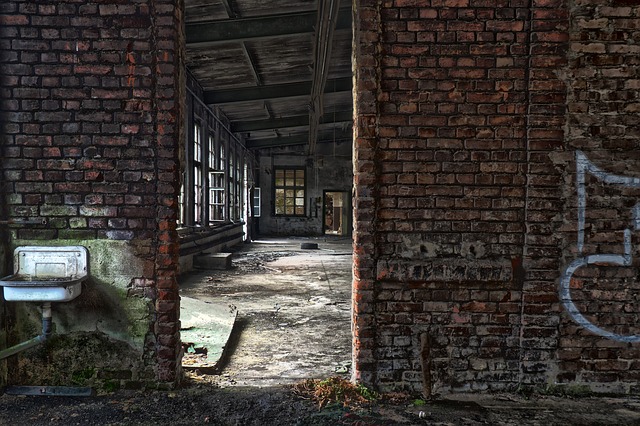
3. Sachsenbad Dresden
Die ehemalige Schwimmhalle befindet sich im Stadtteil Pieschen. Der Bau wurde 1928/29 vollendet und lässt sich stilistisch in die Zeit des „Neuen Bauens“ einordnen. Mit einem flachen Dach, einer schlichten Schmuckfassade und monotonen Fensterreihen sind die einzigen Schmuckelemente zierende Reliefs an den Außenwänden. Im inneren konnte das Sachsenbad mit einem Schwimmbecken, einem Römischen Bad, einem Dampfbad sowie Massage- und Ruheräumen aufwarten, während sich im Obergeschoss eine Galerie, Wannen- Brause- und Kurbäder sowie ein Gymnastiksaal befanden. Tatsächlich sind neusachliche Bauten in Dresden nicht (mehr) sehr häufig zu finden. 1994 kam es zur Schließung des Bades und seither zerfällt es zusehends. Die Stadt ist seit Jahres auf der Suche nach einem Käufer, der die Räumlichkeiten nach Möglichkeit wieder als Badehalle betreibt, trotz vielfältiger Konzepte blieb die Suche bisher erfolglos. Seit diesem Jahr ist nun im Gespräch das Sachsenbad wieder nutzbar zu machen, es sollen Coworking-Spaces, eine Sauna, Wellnessräumlichkeiten und Gastronomie entstehen. Wer die Chance nutzen will und das Sachsenbad noch einmal in seinem ursprünglichen Zustand sehen möchte, sollte sich nicht zu lange Zeit lassen.
Ansprechpartner ist hier die Stadt Dresden, jedoch ist es sicherlich mit einigem Aufwand verbunden eine Erlaubnis für eine Besichtigung zu erwirken. Eine Alternative hierzu sind die Führungen ums Quartier, bei der es einige interessante Fakten über das Sachsenbad zu erfahren gibt. Im Anschluss geht es dann weiter zum alten Heizhaus, hier werden auch die Türen für eine Besichtigung geöffnet.
Adresse: Wurzener Straße 18, 01127 Dresden
Zur Website „Führung ums Quartier“ gelangt ihr hier .
Und hier geht es zur Website der Initiative Sachsenbad.
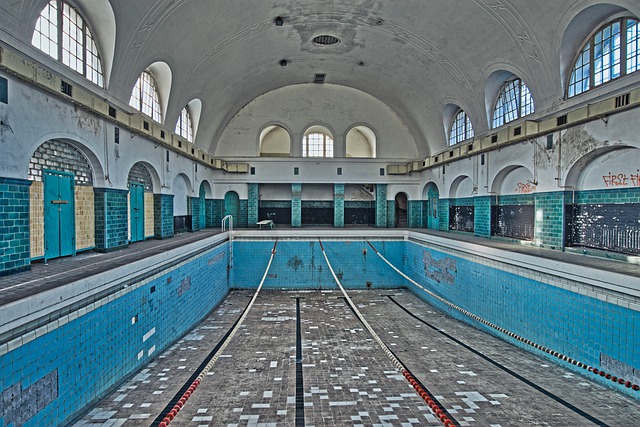
4. „Schweinedom“ und Maschinenhalle
Im Ostragelände, auf der sogenannten Messeinsel in Dresden war in den vergangenen Zeiten ein riesiger Schlachthof angesiedelt. Einige der Gebäude wurden bereits zu Wohnhäusern, Gewerbe- und Büroeinheiten, Messe- und Räumlichkeiten anderer Nutzung umfunktioniert und renoviert. Eines der wenigen verbleibenden noch brach liegenden Gebäuden ist der Schweinedom mit angrenzender Maschinenhalle. Beides wird nun ein Teil der Messe Dresden werden. Für 2020 ist die Einreichung der Pläne angedacht und ein Baustart wird für 2021 prognostiziert und die Fertigstellung ist für Ende 2022 angedacht. Es soll das neue Highlight der Messe werden und für Theaterauftritte, atmosphärische Messen, Konzerte und ähnliches zur Verfügung stehen. Noch gibt es die Möglichkeit das Flair und die Geschichte des von 1906 bis 1910 erbauten Gebäudeensembles zu bestaunen. Erbaut wurde es übrigens von Hans Erlwein.
Ansprechpartner für die qualitativ durchweg hervorragenden Industriebauten, die zukünftig den Namen „Erlweinturm“ tragen soll, ist die Messe Dresden. Vielleicht entscheidet sich die Messe Dresden sogar während der Projektphase die Türen für Besichtigungen zu öffnen, bevor die Bau- und Renovierungsarbeiten starten. Das wäre in jedem Fall wünschenswert.
Adresse: Ostragehege, Messering, 01067 Dresden
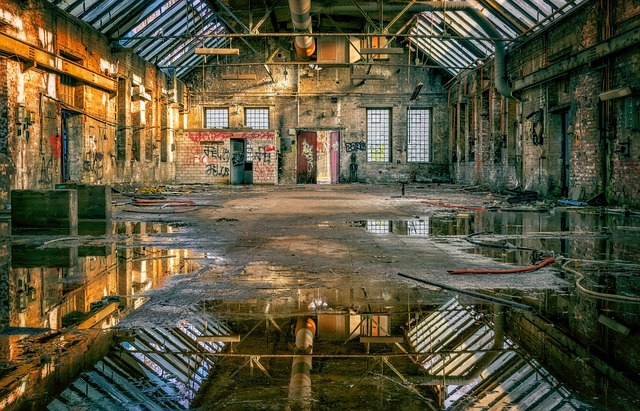
5. Industrie Kultur Parkour
Ihr seid interessiert an Industriebauten in Dresden und deren Folgelandschaften? Dann schaut euch doch mal das Projekt InKuPa an. In geführten Stadtwanderungen erkundet ihr interessante Areale und setzt euch mit Vergangenem aber auch mit Lösungsansätzen zur Reaktivierung auseinander. Ganz nach dem Motto: Informieren, Diskutieren, Multiplizieren. Auf diese Weise habt ihr die Möglichkeit besondere Orte hautnah zu erleben, von Expertenwissen und Geschichten von Zeitzeugen zu profitieren und alles auch noch ganz legal. Themen, Touren, Talks und Walks, wie zum Beispiel über das ehemalige Plattenwerkgelände an der Gerokstraße, findet ihr auf der Website des Projekts Industrie Kultur Parkour .
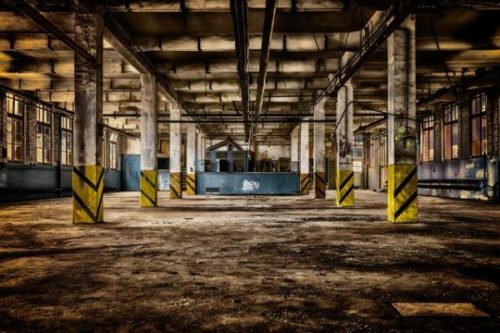
Das waren unsere fünf Lost Places in Dresden. Wir möchten euch noch einmal daran erinnern, dass das Erkunden besitzfremder Gelände nicht nur Gefahren birgt, sondern nicht legal ist. Solltet ihr keine Erlaubnis erhalten: Auch der Blick von außen ist einen Besuch wert.
Habt ihr denn noch den ein oder anderen Tipp von vergessenen Orten in der Region oder zum aktuellen Projektstand der hier vorgestellten Anwesen? Lasst es uns in den Kommentaren wissen.
Allgemein passen die Bilder nicht zu den Beschreibungen, so ist das abgebildete Schwimmbad auf keinen Fall das Sachsenbad, die Halle darunter ist nicht auf dem Schlachthofgelände …
Hallo Stefan,
leider ist es sehr schwierig die Lost Places richtig abzulichten, deswegen verwenden wir Fotos mit ähnlichen Gebäuden. Wir werden uns aber bald auf eine neue Foto-Tour begeben und versuchen die Orte einzufangen.
Liebe Grüße!
Die beschriebenen Locations sind nicht mehr begehbar.
Hallo Marcel,
wir werden den Beitrag demnächst aktualisieren. Kennst du aktuelle Lost Places in Dresden?
Liebe Grüße, Carina
Coole Seite, aber wo ist der Platz auf dem Titelbild?
Der Platz ist leider unbekannt, definitiv aber nicht in Dresden.
Schreibe einen Kommentar Antworten abbrechen
Deine E-Mail-Adresse wird nicht veröffentlicht. Erforderliche Felder sind mit * markiert.
Meinen Namen, E-Mail und Website in diesem Browser speichern, bis ich wieder kommentiere.
Ja, ich möchte keinen Beitrag mehr verpassen und den Newsletter abonnieren!
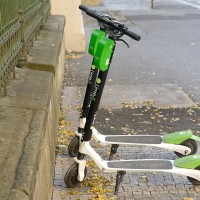
LIME-Scooter machen Dresden unsicher – die neuen Elektroroller

Lost Places in Dresden
Entdecke lost places in dresden.
Lost Places sind verlassene Orte , die eine eigene Geschichte erzählen. Genau das macht Lost Places zu so besonderen Orten, denn jeder Ort erzählt seine eigene Geschichte und zeugt einer bestimmten Zeit.
Dabei kommt es nicht darauf an, ob es sich um eine verlassene Fabrik, eine alte Bunkeranlage oder eine Kaserne handelt. Besonders letztere haben häufig eine interessante Geschichte hinter sich, da sie oft mit brisanten geschichtlichen Ereignissen in Verbindung stehen. Da wären zum Beispiel Überbleibsel der Briten in NRW oder alte Kasernen der Sowjetischen Armee. Doch keine Sorge, auch Lost Places aus der Industrie oder alte Kuranlagen haben wir in unserer Sammlung.
Es gibt also viel zu entdecken, auch im Ausland haben wir Lost Places.
Lost Places in Dresden finden
Eine grobe Orientierung an Verhaltensregeln und potentiellen Gefahren kannst du dem Urbex Codex entnehmen. Wir haben ihn für dich zusammengefasst und erklärt, was du bei Lost Places beachten solltest .
Neue interessante Lost Places

Das verlassene Marienheim – einst ein Lehrkrankenhaus in Wuppertal – soll umgebaut werden.

Ein Atomschutzbunker und mehrere riesige Aufklärungstürme.

Sanatorium Wienerwald ist ein Lost Place tief verborgen in der Landschaft Österreichs.
Was ist an Lost Places so interessant? Das lässt sich so pauschal gar nicht beantworten. Prinzipiell gibt es viele Gründe, weshalb Urbexer verlassene Orte aufsuchen.
Viele Besucher zieht die Ungewissheit an. Was versteckt ein verlassener Ort, was ist seine Geschichte? Besonders die Geschichte verlassener Orte interessiert auch uns, weshalb wir bei unseren Artikeln recherchieren, wieso ein Ort überhaupt verlassen wurde und was danach mit ihm passierte.
Doch auch Fotografie spielt bei Urban Exploration eine große Rolle. So sind unter einigen Urbexern auch sehr talentierte Fotografen unterwegs, die mit Fotografie oder sogar mit Videos Momente auf Lost Places einfangen. So richtig beeindruckend wird es dann, wenn auf solchen Fotos oder Videos ein Teil der Geschichte erzählt wird, den ein Lost Place einst erlebte.

Eine alte Klinik in einem Waldstück. Hier brennt noch Licht!

Ein riesiges verlassenes NATO Krankenhaus, das zum verlassenen NATO-Hauptquartier gehört.
Industrie Lost Places

Walzwerk Basse & Selve
Eine vielfältige Metall Firma, die unter anderem Münzen für das Deutsche Reich produzierte.

Verlassene Zeche Westerholt
Eine verlassene Zeche in Recklinghausen, die unterirdisch mit der verlassenen Zeche Polsum verbunden ist.

Hartsteinwerk Störrle mit Steinbruch
Im idyllischen Naila befindet sich eine große verlassene Fabrik samt Steinbruch.

MCS Technologies
Großer Lost Place mit komplexer Geschichte, versteckt mitten in der Stadt am Niederrhein.

Union Margarinewerk van den Bergh in Kleve
Eine riesige verlassene Fabrik, in der die Rama und Sanella Margarinen produziert wurden.

Alte Ziegelei in Rees
Der Ort besteht aus mehreren Gebäuden und einer großen Lagerhalle mit Brennöfen.
Finde die größten Lost Places

Gigantische Sendemasten, große Vorhangantennen und mehrere schöne Sendehäuser wurden zurückgelassen.

Dieses kleinere Werk wurde von einem (anfangs) illegalen Kraftwerk abgelöst.
- Die verlassene Villa
- Verlassenes Krankenhaus
- Gasflaschen Fabrik
- Altes Brauhaus
- NATO Kaserne
Erfahre mehr rund um das Thema Urban Exploration in unserem Blog. Hier schreiben wir über diverse Themen wie die Sicherheit auf Lost Places, neuste Trends im Thema Urbex und über persönliche Erfahrungen. Außerdem kannst du in unseren Devlogs über Änderungen an unserer Seite nachlesen und erfahren, wenn es Neuigkeiten gibt.
Klick also gerne mal rein und lies dir unsere letzten Beiträge durch.
Hier zeigen wir sieben Hotel Ruinen auf Fuerteventura mit Adressen.
Wir stellen unsere Gaskocher für Lost Places vor.
Endlich ist die bekannte Google Maps Urbex Karte auf unserer Seite verfügbar, die übrigens jetzt noch schneller ist.
1. Die Steinmühle
Die Steinmühle wurde 1303 als Getreidemühle von den Zisterziensermönchen aus dem Kloster Zinn erbaut und von diesen betrieben. Bis 1766 wurde die Mühle als Getreidemühle genutzt, bis der damalige Mühlenmeister eine Genehmigung zur Anlegung einer Schneidemühle (Sägewerk) erhielt.
1845 wurde sie wieder abgerissen und danach als Ölmühle wiederaufgebaut. Ende 19. Jahrhunderts wurde auf Dampfkraft erweitert und die Mühle zur Strohpapierstoff-Fabrik umgebaut. Sie wurde auch weiter als Dampfmühle genutzt. 1918 firmiert die Mühle als „G. Thiele Steinmühle“. Inhaber war Emil Gericke, der Schwiegersohn von G.Thiele. 1934 wurde die Dampfmaschine durch einen Motor ersetzt und die Mühle vergrößert.

Seite 1| 2
Lost Places im Land Sachsen - Seite 1
Auf dieser Seite stellen wir Euch über 30 verlassene Fabriken, Schlösser, Rittergüter, Kaufhäuser und Verkehrseinrichtungen im Land Sachsen vor. Militärische Lost Places in Sachsen findet Ihr hier .
_JPG.jpg)
Auf dem Gelände des 1719 gegründeten Heilbades wurde 1875 das erste Kinderer-holungsheim Deutschlands eröffnet. 1945 bezog die Rote Armee das Gelände ...
Aphrodite-Heilbad
.jpg)
Am Tagebaurand wurden ab 1922 Werkstätten und ein Hochbunker mit Sieb- und Verladeanlage sowie eine Kettenbahn als Fördereinrichtung vom Tagebau ...
Hochbunker für Kohle
.jpg)
Die Mosterei war wie viele kleine Obst-mostereien in der DDR ein Volkseigener Betrieb. Beliefert wurde sie von den vielen Obstplantagen in der Umgebung ...
Mosterei
.jpg)
Die 1887 gegründete Kaltwasserheilanstalt war einst das größte Bad der Stadt. 1996 wurde das Schwimmbad geschlossen ...
Die Wasserheil- und Badeanstalt
.jpg)
Das Kaufhaus war 1868 von Adolph Totschek als Geschäft für Herren-, Damen-, Mädchen- und Knabenkonfektion gegründet worden ...
Kaufhaus Totscheck
.jpg)
Am 1.Mai 1900 wird der erste Frottierwebstuhl der Textilfabrik installiert. Innerhalb weniger Jahre wird der Fabrikkomplex kontinuierlich erweitert ...
Frottierfabrik
.jpg)
Die Fabrik wurde 1868 gegründet. Die ersten Produktionsfelder bestanden in der mechanischen Weberei, Färberei und Appretur von Stoffen ...
Weberei und Spinnerei
.jpg)
Die Papierfabrik wurde Ende des 19. Jahrhunderts erbaut. Es wurden Kartonagen, Pappe und Tapeten produziert ...
Papierfabrik
.jpg)
Das Turbinenhaus des von 1924 bis 1926 erbauten einzigen Flusswasser-Kraftwerks in Sachsen ...
Das stillgelegte Wasserkraftwerk
.jpg)
Das riesige Möbelhaus ist Sachsens bekanntester Lost Place. Die Erbauer-Firma ging schon 2003 in Insolvenz ...
Möbelhaus
.jpg)
Auf dem Plateau eines Berges im Elbsandsteingebirge fanden wir die Ruine eines 1924 erbauten Vereinshauses des örtlichen Bergschützenvereins ...
Vereinsheim des Bergschützenvereins
.jpg)
Das Objekt wird seit 1696 als eigenes Rittergut genannt. 1945 wurde der Besitzer enteignet. Dessen Sohn Horst kaufte 1995 Teile des Gutes wieder zurück.
Das Herrenhaus des Rittergutes
_JPG.jpg)
Das Schloss wurde 1888 im neogotischen Stil mit dem dazugehörigen englischen Park auf einem Rittergut errichtet ...
Die Schlossruine des Rittergutes
Hier gehts weiter zu 24 verlassenen Orten in Sachsen-Anhalt: 1| 2

Places to Visit in Saxony, Germany: Things To Do and Day Trips from Dresden
Home » Destinations » Europe » Germany » Places to Visit in Saxony, Germany: Things To Do and Day Trips from Dresden
This website uses affiliate links which may earn a commission at no additional cost to you. As an Amazon Associate I earn from qualifying purchases.
Updated: 31st March 2023
With Dresden’s magnificent architecture and Leipzig’s free-thinking creativity, grand castles and stately palaces, and the serenity of the Elbe Sandstone Mountains, the best places to visit in Saxony, Germany, are as riveting as the state’s history.
As part of Soviet-occupied East Germany (GDR), Dresden was all but razed in WWII before being painstakingly reconstructed. Leipzig’s peaceful protests were a crucial part of Germany’s reunification, leading to the state being officially reformed with its current borders in 1990. Other nods to more distant history are easily found, with historically vital fortresses and former estates of noble families dotting the land.
The region is also revered for its contributions to culture and art, so it’s no surprise many of the best things to do in Saxony involve music, such as visiting an Opera House or enjoying a concert against a palace backdrop.

Other popular day trips from Dresden – although some of these places certainly deserve longer – include underrated towns which tell the stories of indigenous communities or traditional dishes, wine estates with river views, and the verdant and rocky Saxon Switzerland National Park, which traverses the border with Czechia.
Whether you want to urban kayak, hop between museums, hike unadulterated landscapes or learn about ancient mining traditions, Saxony more than has you covered.
These are 15 of the best (in my opinion) places to visit in Saxony – but first, here are a few FAQs to help you plan your trip.
No, they are not – and it can be a little confusing that the three states have the same name. Lower Saxony is actually in northwest Germany (the capital is Hanover), while Saxony-Anhalt (capital Magdeburg) borders Saxony. Saxony’s formal name is the Free State of Saxony. The region’s history explains a bit more about how the names came to be, including why Upper Saxony is actually located below Lower Saxony.
Yes, Sachsen is the German language name for Saxony.
Absolutely! I’ve visited the state twice (once in summer and again in winter) and had fantastic trips both times. In the winter, Saxony is an excellent place to visit for Christmas Markets in Dresden and festive traditions in the Ore Mountains. The warmer months are ideal for hiking in the Saxon Switzerland National Park, sipping regional wines along the Elbe river, and visiting the many palaces and castles dotted around the region.
If you want to take a deep dive into the Free State of Saxony on a rail or road trip, I’d suggest spending a week in the region. This would allow you enough time to visit Dresden, Leipzig, the Saxon Switzerland National Park, and several smaller towns and castles. If you’re pressed for time, a long weekend will allow you to see the region’s highlights if you move each day.
Dresden is perhaps the best base for a visit to Saxony, especially if you plan to get around by public transport as it’s very well connected. Leipzig is another good city base, but not as centrally located. If you’re coming for Christmas markets and traditional experiences, you might want to consider Chemnitz or Seiffen . Nature lovers will likely prefer a base around the spa town of Bad Schandau .
While some would say that Dresden could be done as a fast-paced day trip from Berlin, I’d urge you to consider spending at least two days in Dresden . The city has a lot of history, grand architecture and some fantastic museums to visit, as well as attractions nearby along the Elbe.
The Bastei Bridge in Saxon Switzerland National Park and Leipzig are perhaps the most popular and best-known day trips from Dresden. Bautzen is one of the best day trips as you can learn about the Sorbs, a West Slavic ethnic group, or along the Elbe River for wineries and castles.
Dresden and Leipzig’s airports offer a limited choice of flights and mainly serve nearby countries and domestic connections, although they do have Ryanair flights to London. High-speed rail connects the region with Munich and Nuremberg, providing alternative flight options. Or, for a flight-free journey from the UK, consider the new London to Berlin night train via Brussels followed by a regional connection using Germany’s new €49 regional rail pass .
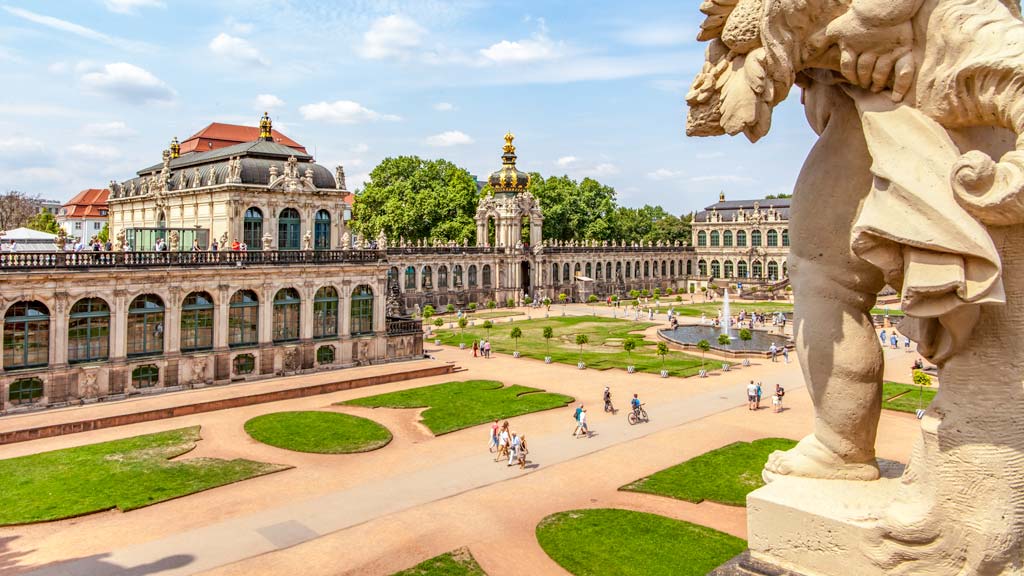
Before diving into all of the other incredible places to visit in Saxony as day trips from Dresden, let’s first talk about the region’s showstopping capital itself. A criminally underrated European city , Dresden flanks the Elbe River with elegance and grace. Awash with dazzling Baroque architecture and plenty of cultural spaces, it’s hard to imagine just how much this city suffered during WWII.
To give you an idea of the amount of work and love which went into reconstructing Dresden after the intense bombing, take a look at these photos contrasting the then and now . Yet, as you wander between the churches, squares and grand architecture of the Altstadt (Old Town), you’d never know – this was restoration at a passionate, dedicated and detailed level.
Unsurprisingly for the state’s capital, many of the top things to do in Saxony can be found in Dresden, with a particular focus on art and culture.
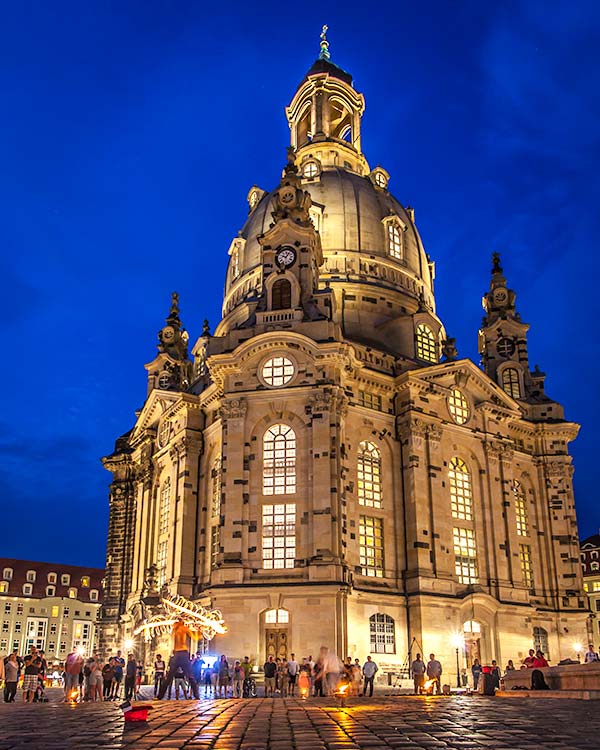
Dresden Zwinger, a vast Baroque masterpiece of palace, courtyards, and fountains, is the leading lady, with cultural kingpins such as the Porcelain Museum and the acclaimed Old Masters Picture Gallery inside her walls. For something special, you can book tickets to a Gala concert at the Zwinger . Semperoper Dresden, the city’s opera house, is an equally impressive overture, and you can enjoy a guided tour by booking in advance if you don’t plan to see a performance.
Other prequels and sequels of the city include Dresden Castle, the city’s hulking cathedral, and the Fürstenzug, an impressive and expansive outside artwork depicting a royal procession.
The grand finale though is certainly The Frauenkirche, an imposing centrally-located church complete with gold interiors and a hulking dome. From the viewing platform, you’ll get some of the city’s finest views, including across the Elbe River to the more modern quarter, where independent artist shops and funky bars are found around the Kunsthofpassage.

Read More: Things to do in Dresden
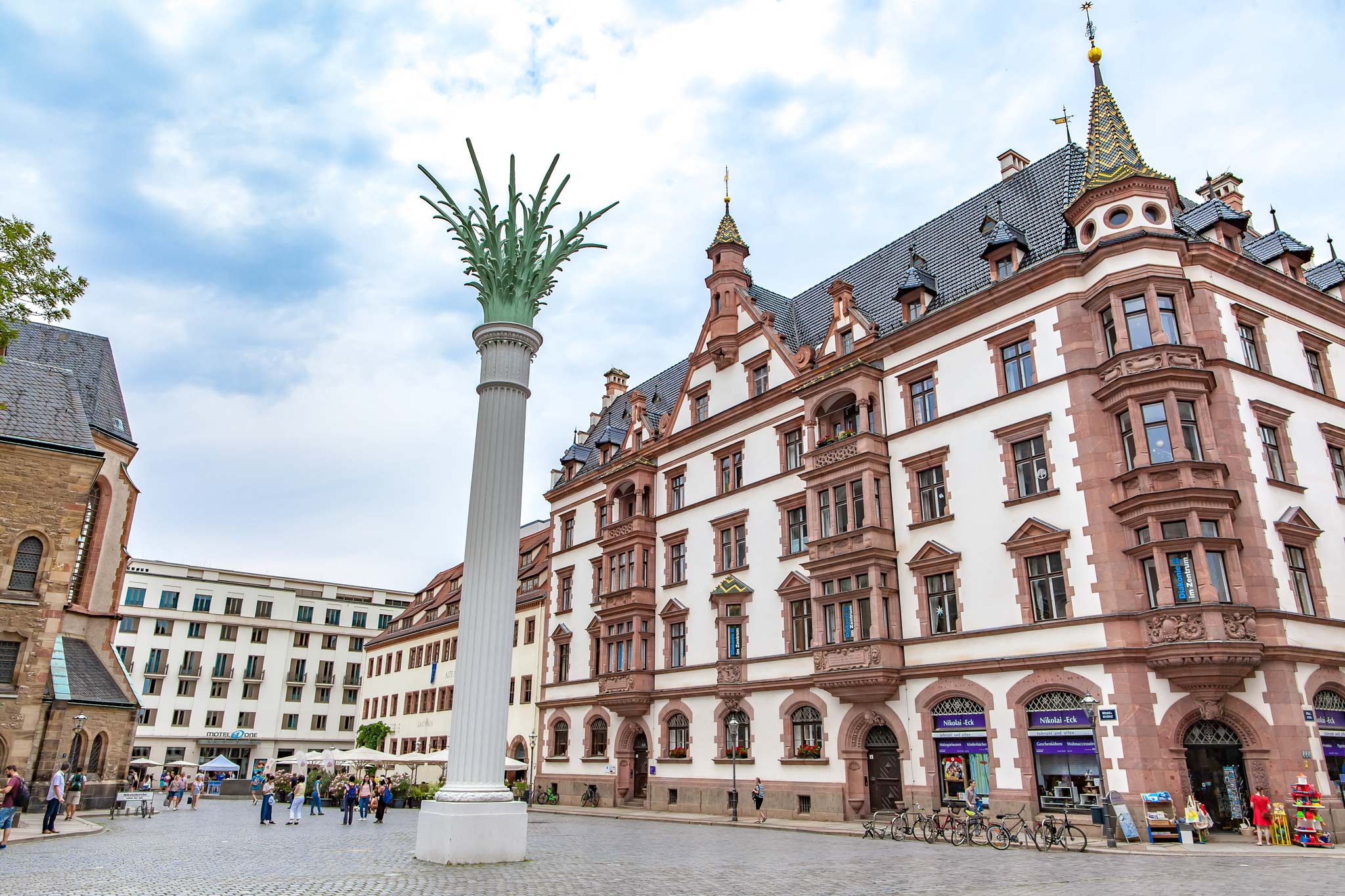
Of all the places to visit in Saxony, Germany, Leipzig is perhaps the most distinct. This city has an industrial spirit and a university atmosphere, which makes it feel a world away from the more old-world towns nearby. While I’d say the oft-given moniker of the ‘new Berlin’ is perhaps a bit extreme, you can certainly see some similarities.
That’s not to say forward-thinking Leipzig hasn’t paid its dues to Saxony’s classical heritage. In fact, the city has been an overachieving contributor. Classical composer Wagner hails from Leipzig, while Bach lived, composed and died here. The Gewandhaus Orchestra claims the title of the oldest civic symphony orchestra in the world.
But it’s also a city steeped in industrialism. Whether you’re touring the BMW factory , walking through the dated retail passageways while learning about the beginnings of the city’s Old Trade Fair in 1913 – one of the oldest in the world – or admiring the collection in the Spinnerei Galleries , housed in an old cotton factory, you’ll be inadvertently connecting with the cities manufacturing past.
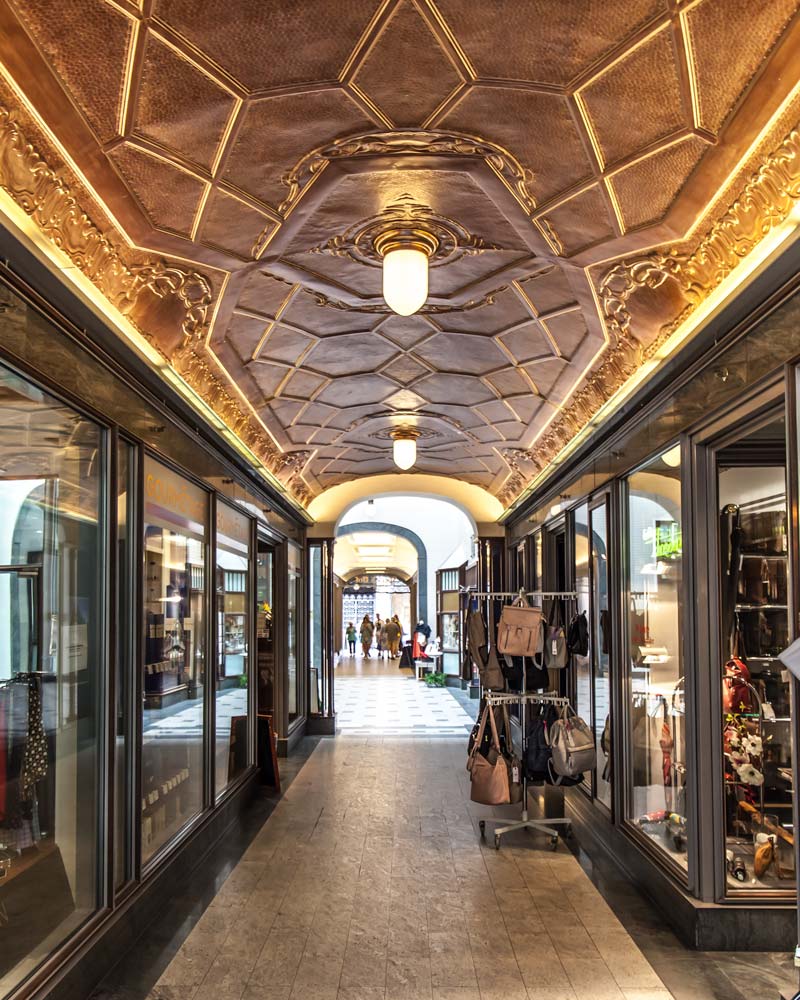
Leipzig is also one of the most important places to visit in Saxony to learn about Germany’s past, as the city’s peaceful protests, which happened each Monday leading up to 1990, are one of the key factors which led to the fall of the GDR and east and west reunification.
Of course, that student population and references to a ‘new Berlin’ help the city come alive at night, with some banging clubs keeping the rave going until the early mornings – perhaps reason enough to forget visiting on a day trip from Dresden and staying at least one night.
How to get to Leipzig: It takes around 80 minutes to reach Leipzig by train or car, making it an easy day and popular day trip from Dresden. Still, it’s a large city with great nightlife, so you might want to make it a separate city break or stay for at least one night.

Read More: What to do in Leipzig
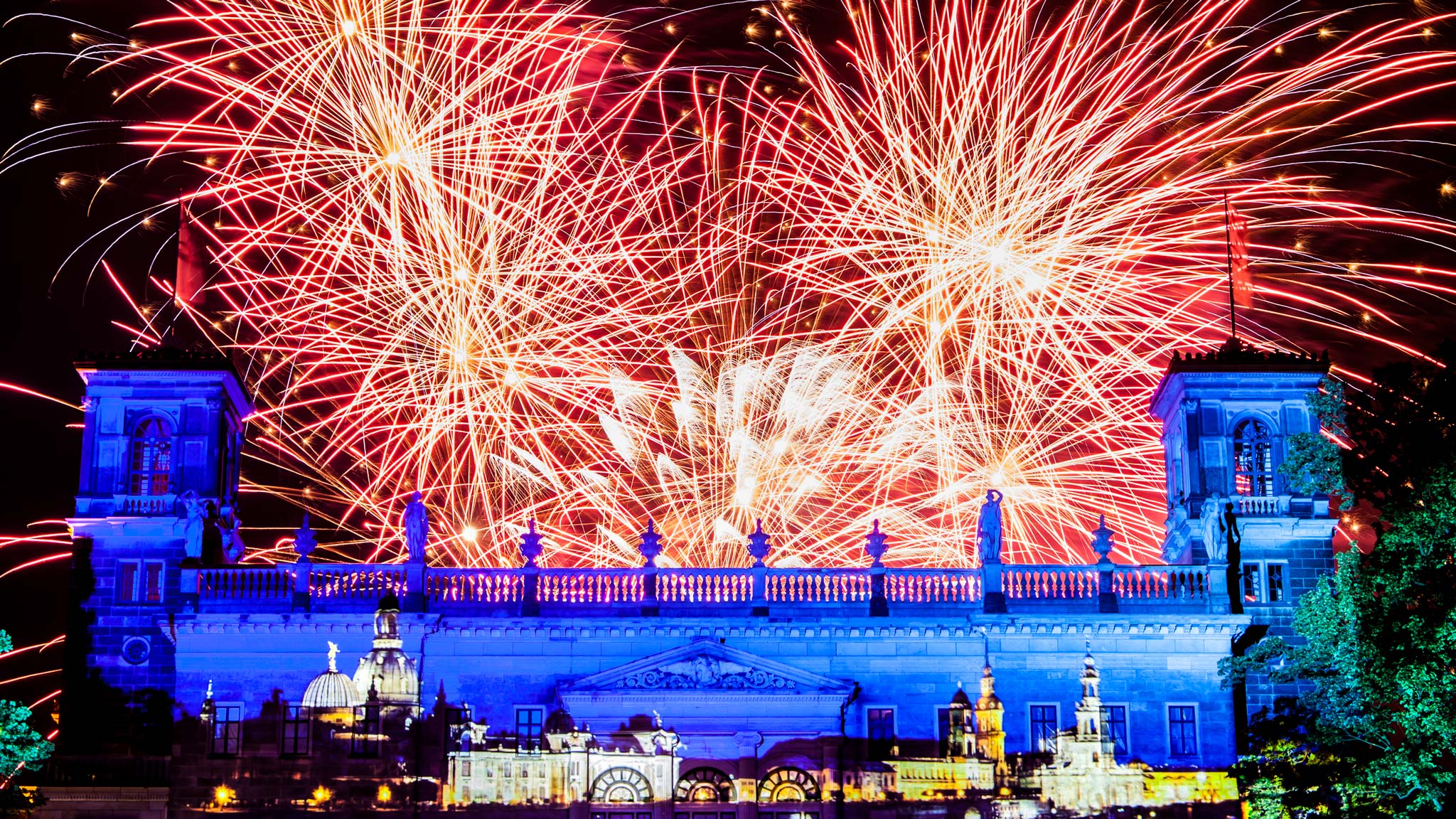
Albrechtsberg Palace
There are hundreds of castles and palaces in Saxony, Germany, with a handful of these being in Dresden’s peripherals lining the Elbe River, and Albrechtsberg is one of the most impressive.
Constructed for a Prussian price in the mid-1800s, the palace’s extensive gardens, fountains, and stairways are an inviting prelude to the grand interior. Visitable by guided tour , the interior rooms retain their bygone charm even though the city now owns the building.
If you find yourself in Dresden in July, you’ll be lucky enough to enjoy one of the top things to do in Saxony’s event calendar – attend the Dresdner Schlössernacht , which takes place on the palace’s grounds.
This avant-garde festival was one of the highlights of my second visit to Saxony, as musicians, performers, fireworks, fine wines, and projections on the castle welcomed in the summer with a bang. Everyone was dressed up and looked fantastic, and at sunset, the DJ and orchestra started to play club tracks together, creating an incredible soundtrack for the rest of the evening.
If you don’t make the Schlössernacht, keep an eye out for other events, such as open-air film screenings in the warmer months.
How to get to Albrechtsberg Palace: As the palace is in Dresden’s outer limits, trams and buses will bring you here quickly. Alternatively, I enjoyed and would recommend the walk along the river, which took just over an hour.
The Bastei Bridge & Saxon Switzerland National Park
The Bastei Bridge and rock formations are one of the most popular day trips from Dresden. However, you’ll want to set off early to ensure you have time to explore all the magnificent Saxon Switzerland National Park offers.
Spanning the border, the park is split between Saxony, Germany and Czechia, where it’s known as Bohemian Switzerland. An enchanting landscape of jagged rocks, passageways carved through boulders and dense woodland, it’s a popular place to visit in Saxony for rock climbing and hiking.
The park’s biggest draw, though, especially with photographers, is the Bastei Bridge which sits in the shadow of some of the most impressive geological wonders shaped by water erosion millions of years ago. Originally built from wood, the current sandstone bridge was built in 1851.
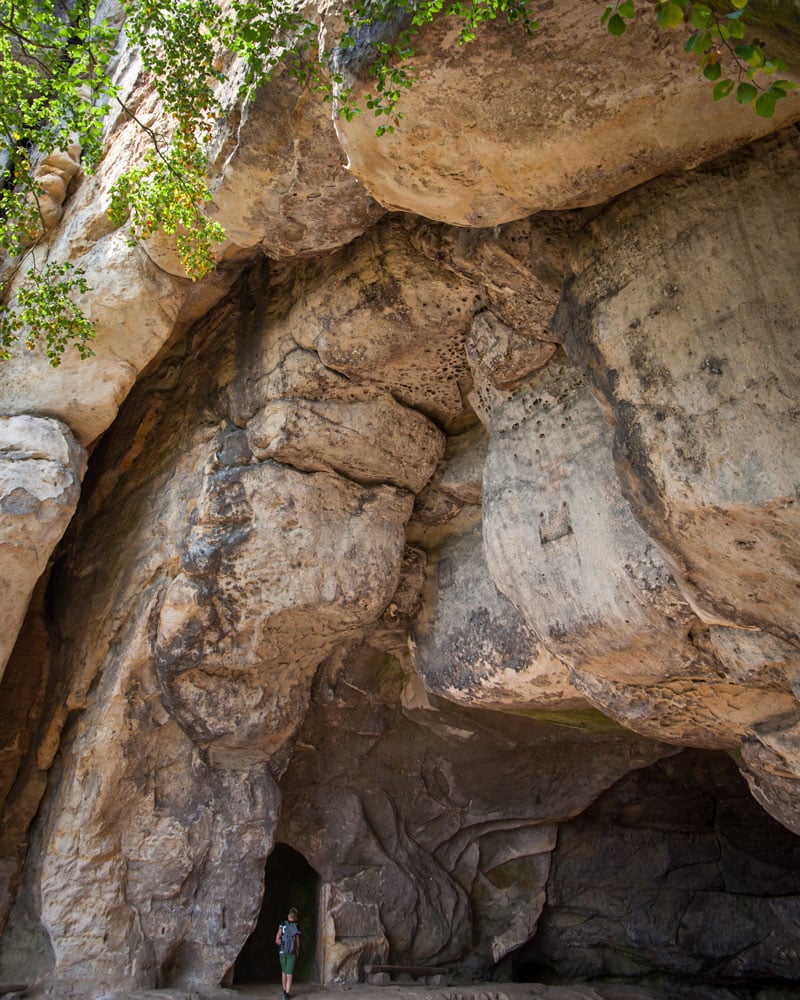
Don’t make the mistake of just coming to see the bridge, though, as there are plenty more equally impressive locations. The Stairway to Heaven – an unbelievably narrow stairway between two giant rocks – and a handful of waterfalls are well worth hiking for.
If you want to visit as a full-day trip without any hassle, this €20 bus tour from Dresden (including Bastei and Königstein Fortress) might appeal.
How to get to Saxon Switzerland National Park: To reach Bastei on a day trip from Dresden, a car is helpful if you want to visit various places around the park. Still, if you want to make a beeline to Bastei and the surroundings only, the S-Bahn from Dresden to Kurort Rathen takes a little over 30 minutes. From there, you can start enjoying the scenery on the walk towards Bastei. To reach the ‘Stairway to Heaven’ hiking area, the Kirnitzschtal tram from Bad Schandau to Lichtenhainer Wasserfall is the way to go.
Königstein Fortress and Bad Schandau
Another of the best things to do near Saxony’s Switzerland National Park is to tour the mighty Königstein Fortress. Overlooking the Elbe River, this expansive defensive complex has been surveying the landscape since 1589, although it was a smaller castle before this.
With Baroque, Renaissance, and Gothic architecture, it’s a storied treasure which has been lorded over by the Saxon Royal Family, the Bohemian Kingdom and served as a royal retreat, prison, and even a spa hospital for wounded soldiers. To say it’s vast would be an understatement, so be sure to allow yourself enough time to visit.
Chances are, if you’re heading to Königstein Fortress, you’ll also pass through Bad Schandau. While I didn’t spend much time in this town, it’s a quaint spot with a few thermal spas and wellness centres if you’re after a little TLC.
A peaceful way to visit is onboard a boat trip from Dresden, allowing you to see various castles along the Elbe en route before arriving at Königstein Fortress. The sailings can cost as little as €30 for a full-day boat trip .
How to get to Königstein Fortress: Sitting on the other side of the river not far from Bastei, they can easily be combined or by taking a bus from either Bad Schandau or Pirna.


The Elbe River and Saxony’s Vineyards
While talking about the Elbe River, let me introduce you to the pristine and small-batch vineyards that can be found rising from its banks.
I get that Germany isn’t the most celebrated wine producer in Europe, and the wines of Saxony are some of the country’s lesser-known, but that’s what intrigued me to visit. And, as it turns out, after a couple of days rushing around the region’s smaller towns, a glass of wine with a river view had shot to the top of my list of things to do in Saxony.
The wines grown along the Elbe are rather unique and flavoursome, with the majority cultivated by tiny producers. There are apparently around 3000 growers here, although the wineries that open and service the public are far fewer.
I visited Weingut Klaus Zimmerling , enticed by its promise that wine meets art. An interesting concept and location, the couple-owned vineyard gives space to both of their passions; one harvesting Riesling and Sauvignon Blanc in granite and the other creating some incredible sculptures. Degustations are available, as are tours of the vines – check opening hours and book in advance – and if you plan to spend late summer in Germany , then you’ll also be able to witness the wine harvest, which usually starts towards the end of August or the beginning of September.
How to get to the vineyards: One of the closest and most straightforward of the Elbe River’s vineyards to visit as a day trip from Dresden is Zimmerling is just a 30-minute drive from the city. Allow an hour if you’ll use public transport. The onsite wine shop is open from Wednesday to Sunday.
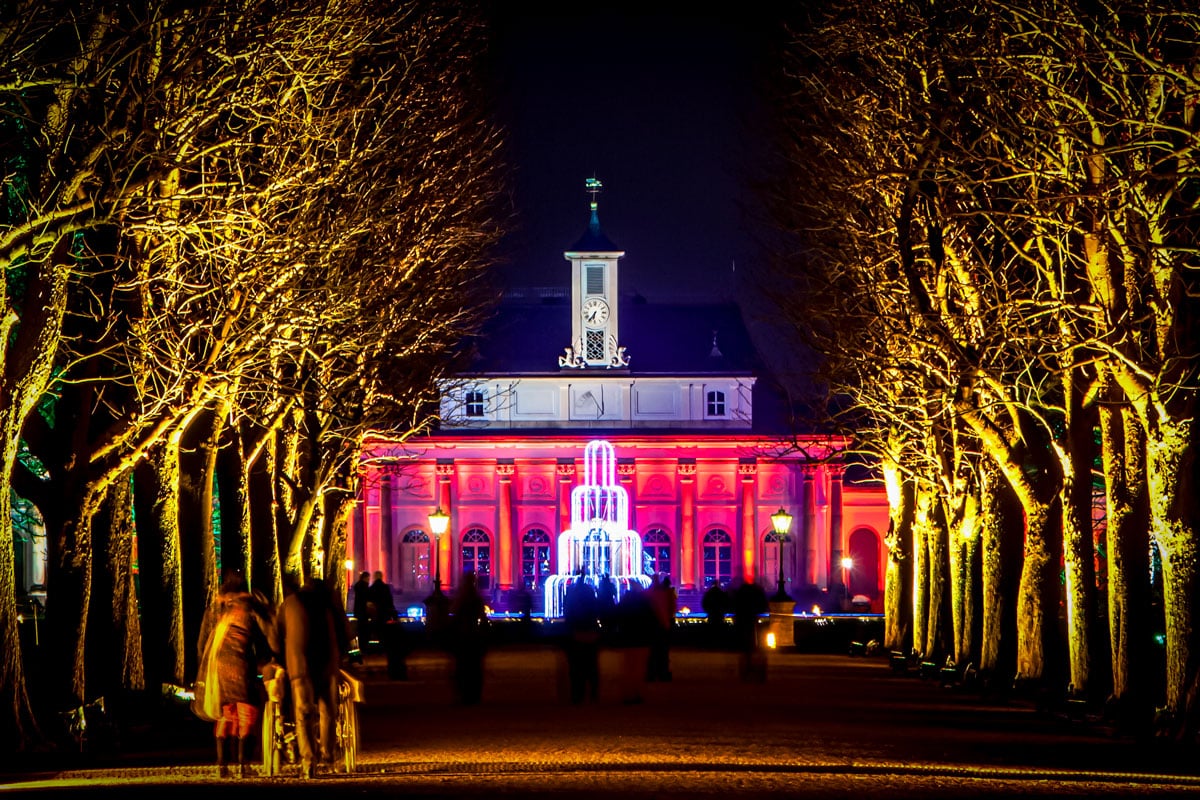
Pillnitz Palace
If it’s not apparent yet, many of the top things to do in Saxony are palace visits – but bear with me, as this one has a sweet Saxony treat at the end of it!
Pillnitz Palace and Park is one of the region’s grandest affairs, made even more special by the staircase which rises from the Elbe and once served as an elegant arrival point.
Sadly, I didn’t get to see the inside of the Castle – I visited during the Christmas period when festive light installations take over the beautiful gardens – but from the photos of the areas which are open to the public, such as The New Palace and the Museum of Decorative Arts, it looks worth a visit. Just keep in mind certain parts close during the winter months.
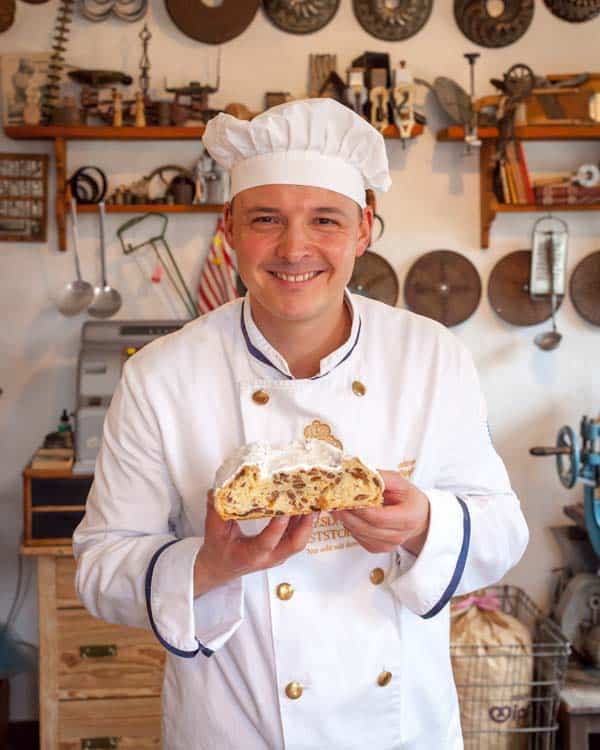
If you’re not fussed about touring the palace and would rather see the stairs and other castles near Dresden from the waterway, you might want to book the Elbe river castle river from Dresden instead.
Nearby, in the small village of Pillnitz, one winter treat is available year-round at Bäckerei Wippler. This more than 100-year-old bakery has been producing the typical Dresdner Stollen – a popular local Christmas treat – in the traditional method since opening. So, where better to enjoy a coffee and a cake than in the European festive staple’s birthplace and legally protected designation area?
How to get to Pillnitz: By car, it’s around 25 minutes along the Elbe to Pillnitz. On public transport, it will take about 50 minutes with one change.
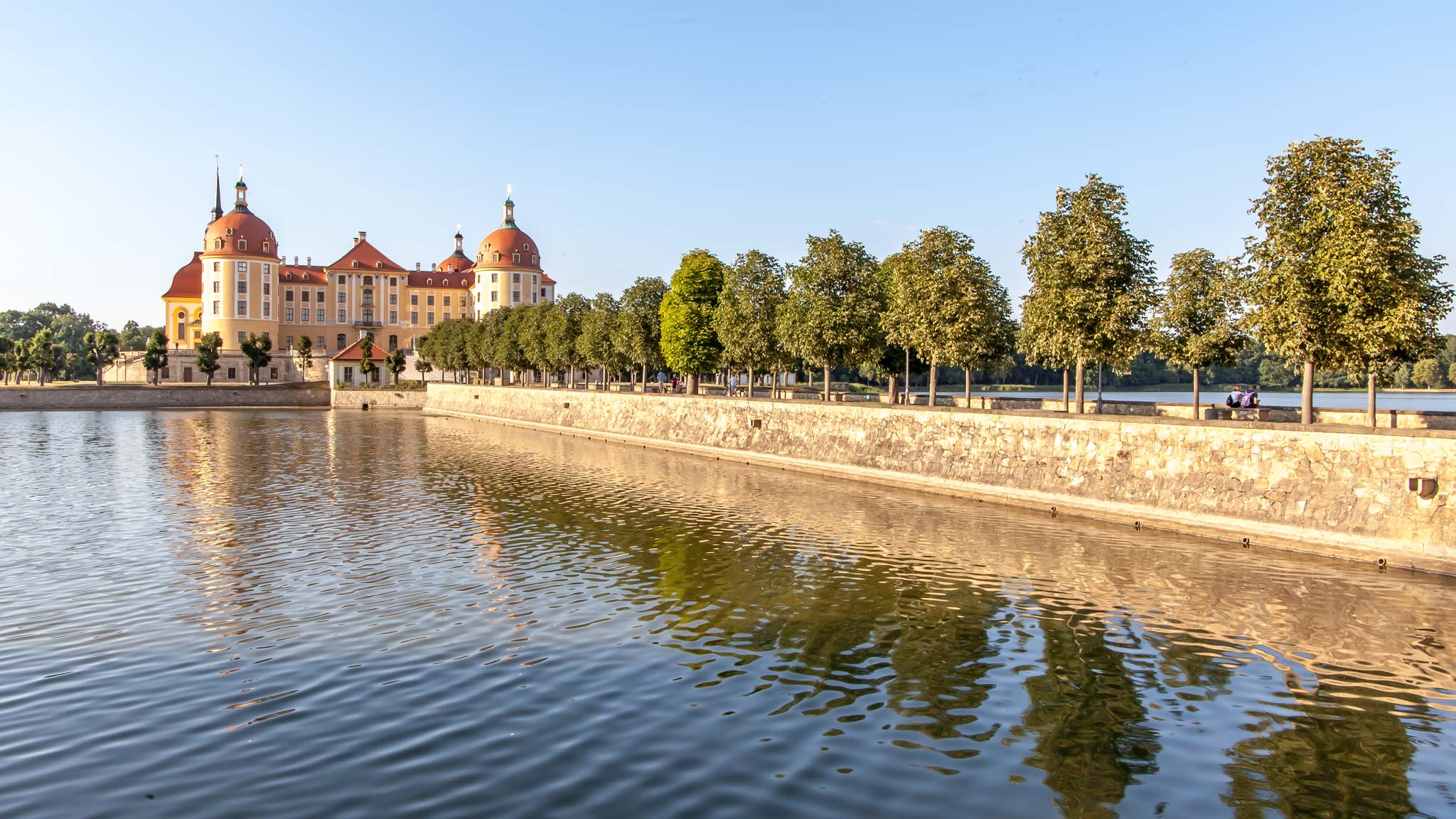
Moritzburg Castle
Continuing the stately theme, the Moritzburg Castle is another popular Dresden day trip. Designed by the same architect as Dresden’s Zwinger, its impressive and symmetrical beauty is made even more enchanting by its moated location in the middle of a small lake.
While the outside is where you’ll find the best photo opportunities – the pastel yellow turrets and resident swans are a photographer’s dream – the baroque interior is just as enchanting.
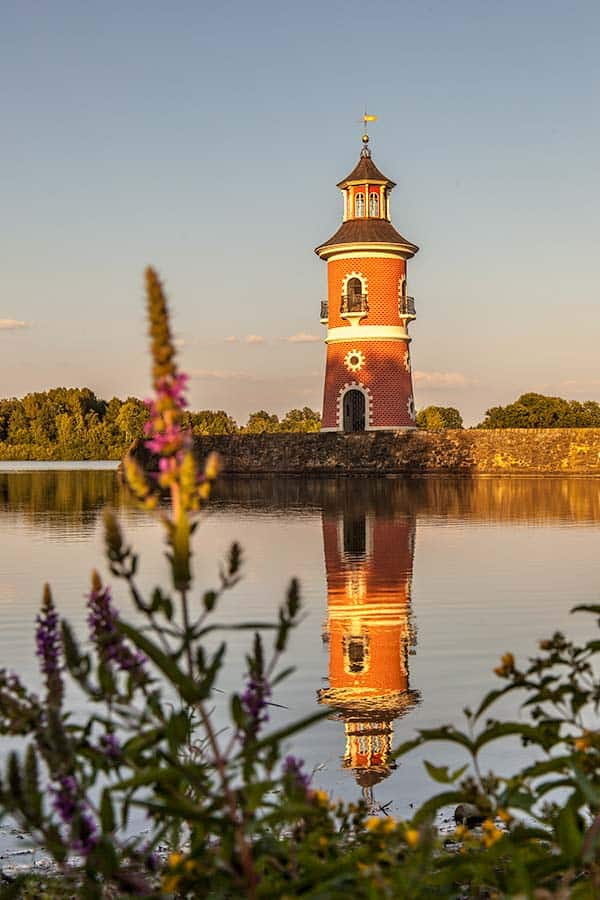
You’ll also find a few more special places in Saxony nearby. First, head to the well-preserved and bright-pink Fasanenschlösschen (Little Pheasant Castle) before continuing to the pond to spot the Leuchtturm, a small lighthouse which looks slightly out of place in landlocked Saxony.
How to get to Moritzburg Castle: A popular day trip from Dresden means you can hop on the bus (477) from Dresden Bahnhof Neustadt and arrive in around 30 minutes.
Görlitz is the only one of these places in Saxony that I personally didn’t make it to, as bad winter weather changed my schedule. Still, when I return, I hope to be able to make it out to this small town which straddles Germany’s border with Poland.
The most easterly town in the country, the main reason I wanted to visit – and hence keeping the recommendation in this article – is it’s also considered one of Germany’s prettiest.
With a cobbled and photogenic pedestrian square flanked by architecturally rich buildings, Görlitz blends its diverse array of styles with flair. Art Nouveau, Baroque and Renaissance all feature, and as WWII didn’t leave many scars on the cityscape; the mediaeval and historic remain well preserved. Cross the Old Town Bridge – which sits in the shadow of the city’s foreboding Gothic church – and you’ll arrive in Zgorzelec, the Polish ‘other half’ of the city.
How to get to Görlitz: By train or car, it’s a 90-minute journey, making this a manageable day trip from Dresden.
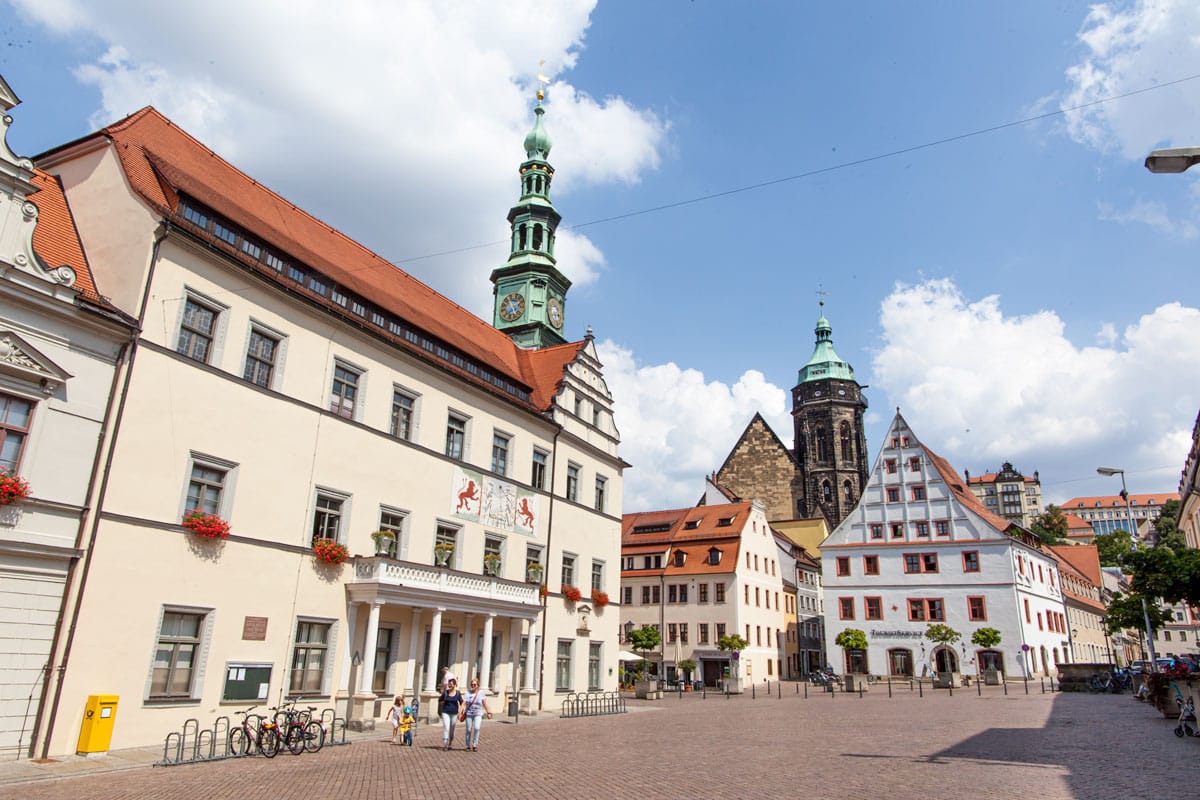
Pirna is a small yet adorable medieval town, and while it’s not the most exciting place to visit in Saxony, it’s somewhere you may pass through on a bus connection to Saxon Switzerland National Park.
Sadly, in 2002, the town suffered a severe flood which caused much damage. Now, with much of the worst repaired, the medieval square, cobbled streets lined with boutique stores, and Sonnenstein Castle shine once more.
If you decide to spend some time in the town, the Pirna Museum – housed in a former monastery – and the views from the fortress will fill a few hours.
How to get to Pirna: Thanks to Pirna being on the S-Bahn (S2), this is one of the quickest day trips from Dresden – and a central connection point for certain onward travel – taking a little over 20 minutes. The drive will take closer to 40 minutes.

Read More: Europe’s hidden gems
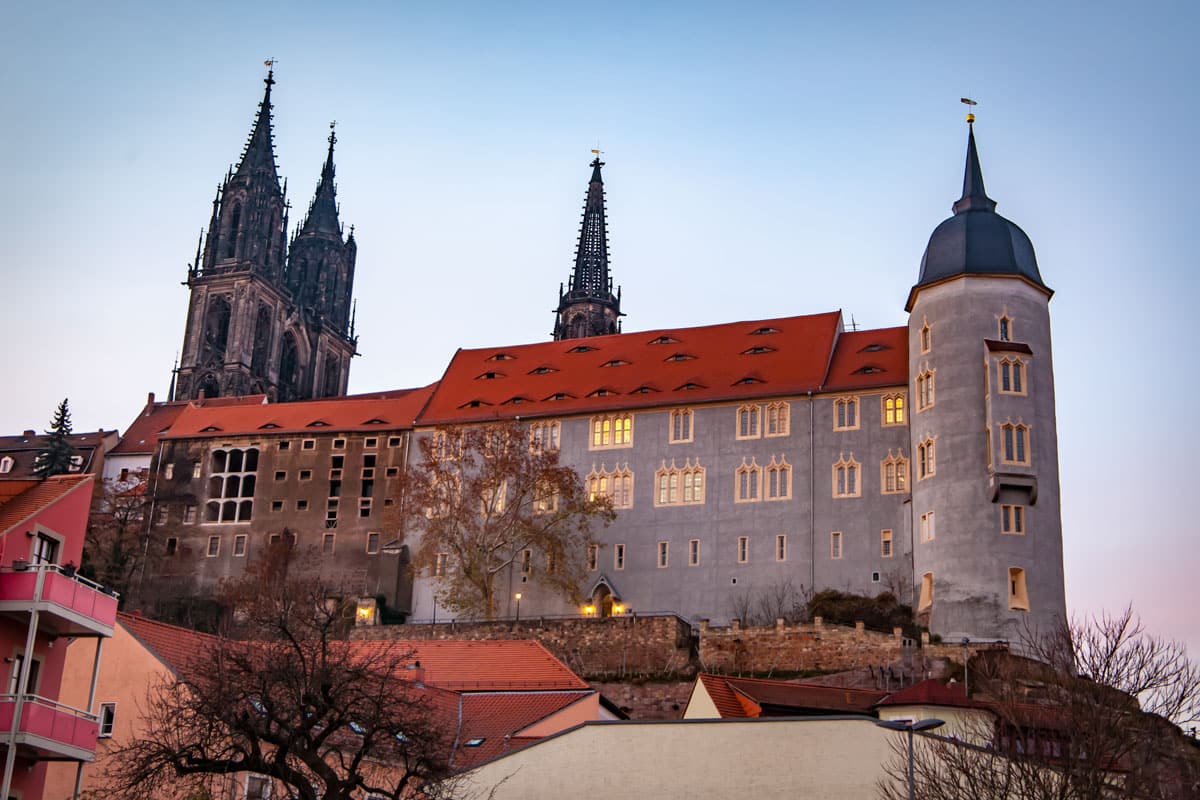
Meissen was one of my favourite places in Saxony, not least because it’s drop-dead gorgeous, especially during Christmas when the town square is converted into a life-size advent calendar.
You don’t need to plan for a December trip to enjoy Meissen, though, as the town sparkles year-round. As you approach Meissen, you’ll be immediately taken by the riverside views and the 15th-century Albrechtsburg, a castle-cum-church which crowns the cluster of ochre rooftops. Of course, a visit inside is a must, and the castle’s rooms are packed with information and exquisite decor.
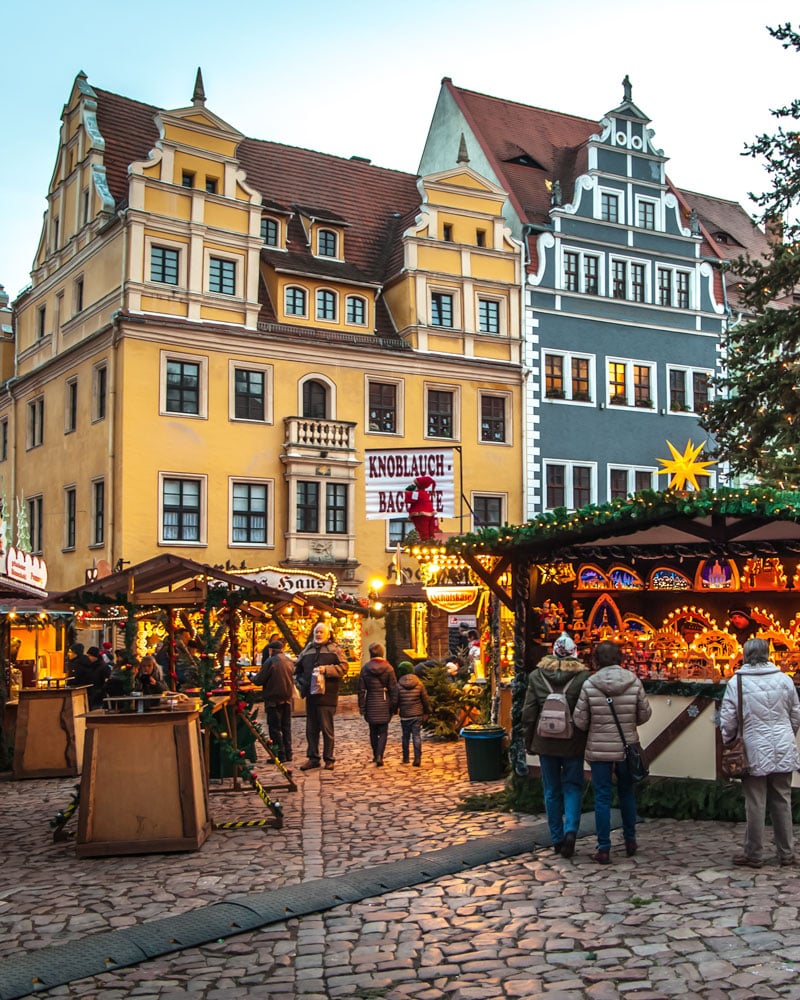
One of the most popular things to do in Saxony is to shop for porcelain in Meissen. Long a renowned centre for the production of ‘white gold’ – Meissen was one of the first manufacturers in Europe – the Stadtmuseum Meißen is packed with informative displays and exhibits.
If you want to pick up some porcelain to take home, you’ll find numerous shops around the town, and you can even join a workshop to participate in this ancient tradition yourself.
How to get to Meissen: The drive to Meissen from Dresden should take around 45 minutes. By train, a change is required, which can double the journey time.

Read More: Dresden Christmas markets
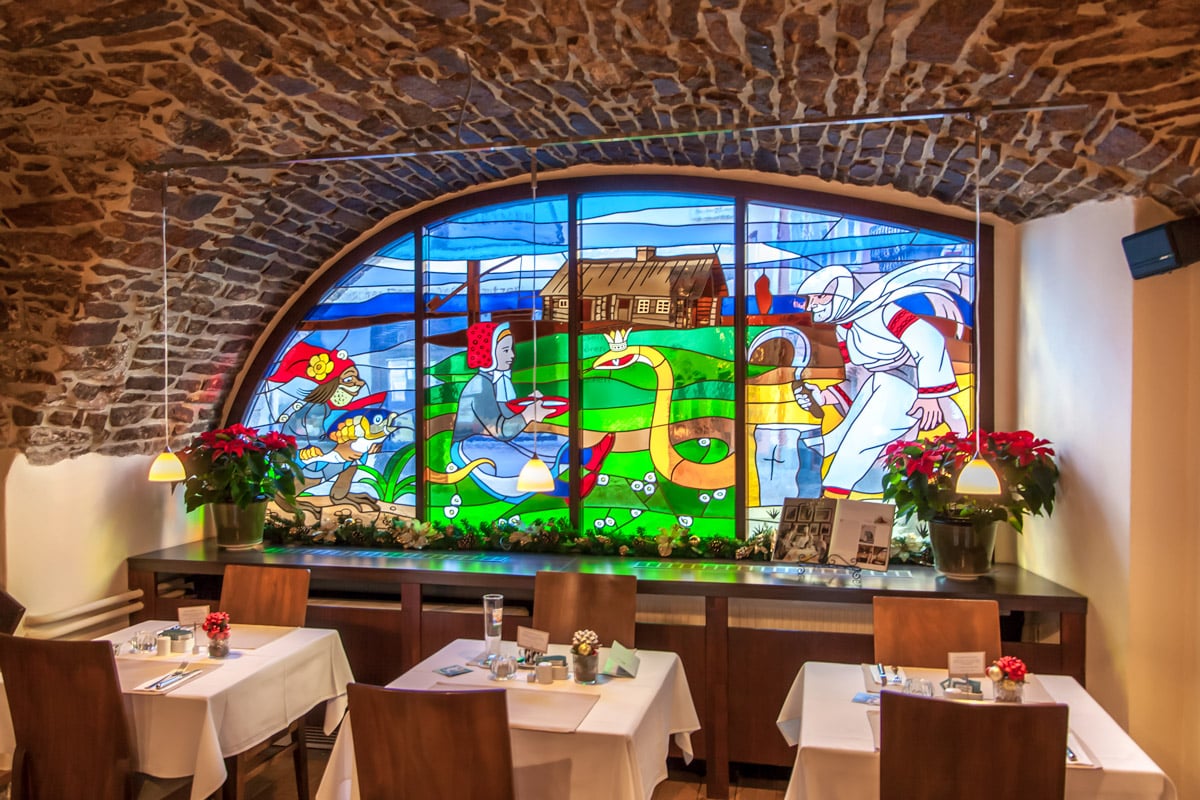
Many visitors don’t realise that Saxony and Germany has an official minority language, Sorbian. To learn about this indigenous and ethnic minority population, Bautzen is the place to come.
The Sorb live in parts of Lusatia (which includes Saxony and Brandenberg), and the language is closer to Czech and Polish than Germany. While only a few thousand Sorbs live in those countries still, it’s believed that more than 50,000 Sorbs reside in Germany, with many calling Bautzen home.
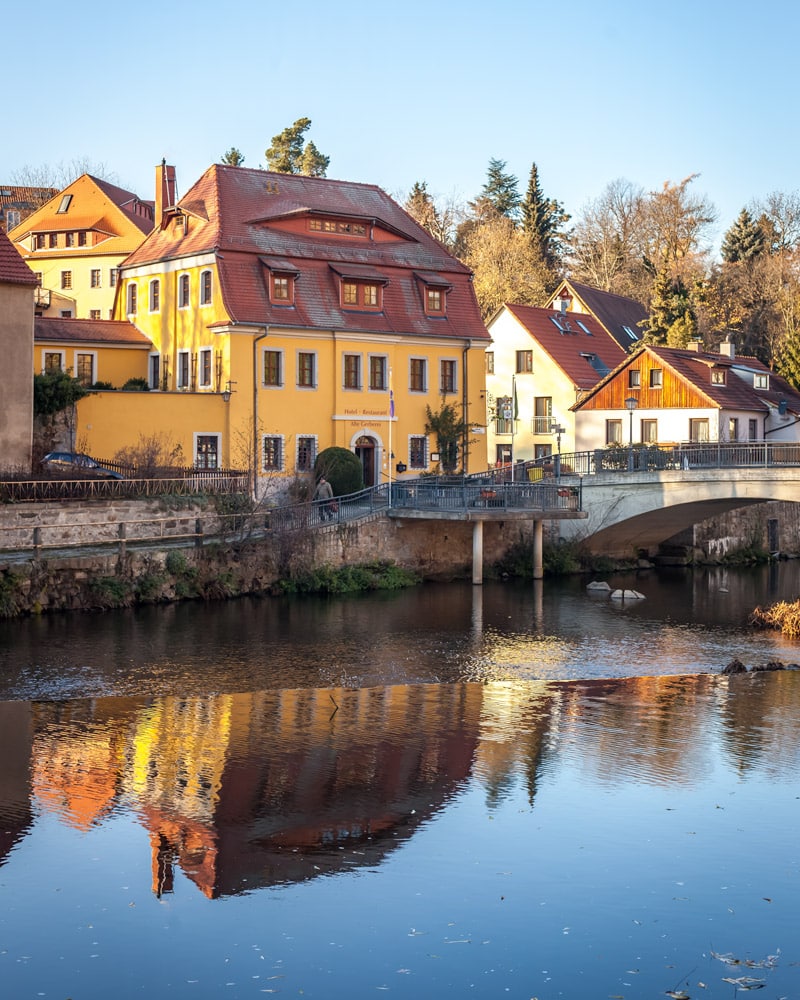
Visit Sorbisches Restaurant to eat traditional dishes and see legends depicted on the stained glass; learn more about the Sorbian culture, clothing and history at the Sorbian Museum ; and relish the chance to hear the language still spoken by pockets of society.
Other things to do in Saxony’s romantic town of Bautzen include walks along the mirror-like river admiring the castle turrets and visiting the peculiarly shaped central Cathedral of St Peter. Inside, it gets even more interesting as the space is used by Catholics and Protestants, with a physical divide inside. One of the oldest and most unique churches in Germany, it’s worth a visit even if you’re starting to suffer ‘religious monument fatigue’.
How to get to Bautzen: This is one of the best day trips from Dresden, as you’ll learn about the region’s unique culture. Thankfully, it’s just under an hour by train and a touch longer by car.
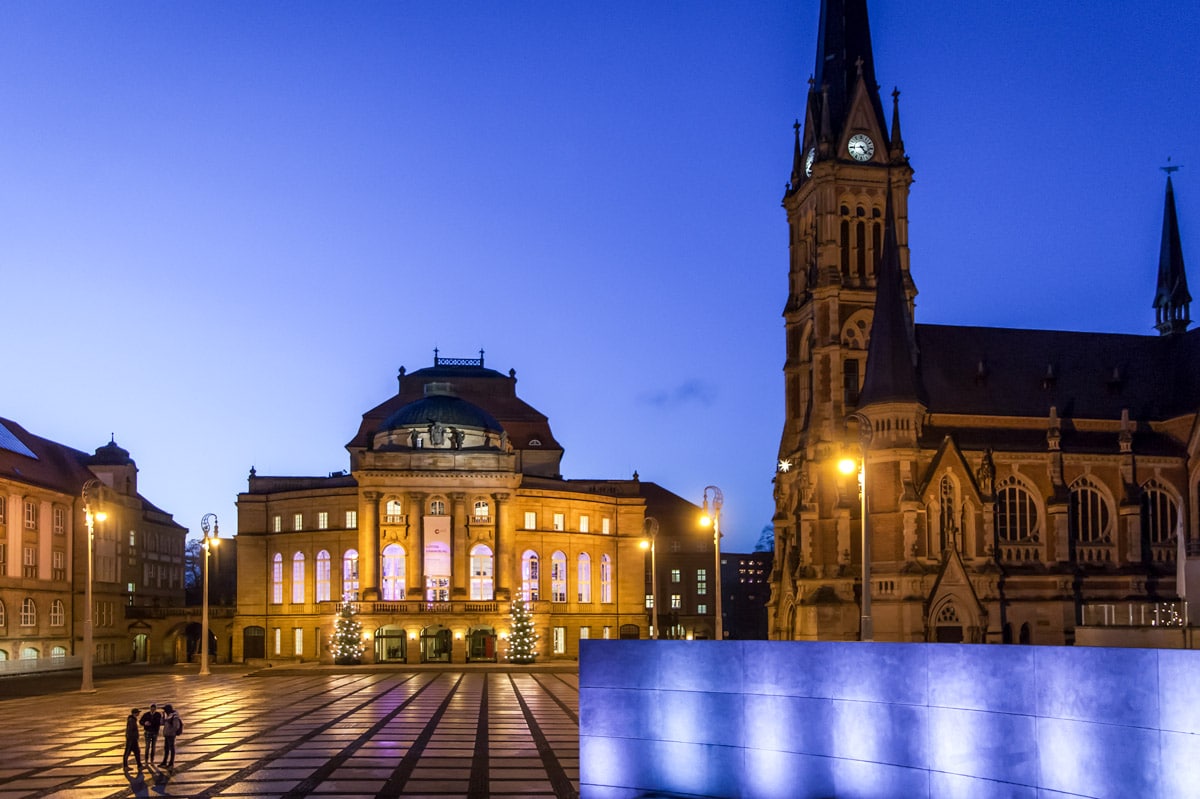
Chemnitz is the third largest city in the Saxony, Germany region, and offers everything you’d expect from an urban centre in the ‘State of the Arts’. There’s a respected opera house, an impressive town hall, and a soaring church. But, with little of the Old Town left – WWII left its scars, and new builds were favoured over reconstruction – most of the city is a bit more futuristic.
What makes Chemnitz a popular place to visit in Saxony is its proximity as the nearest central town to the Ore Mountains. This means the city comes alive at Christmas with mining parades and a busy festive market.
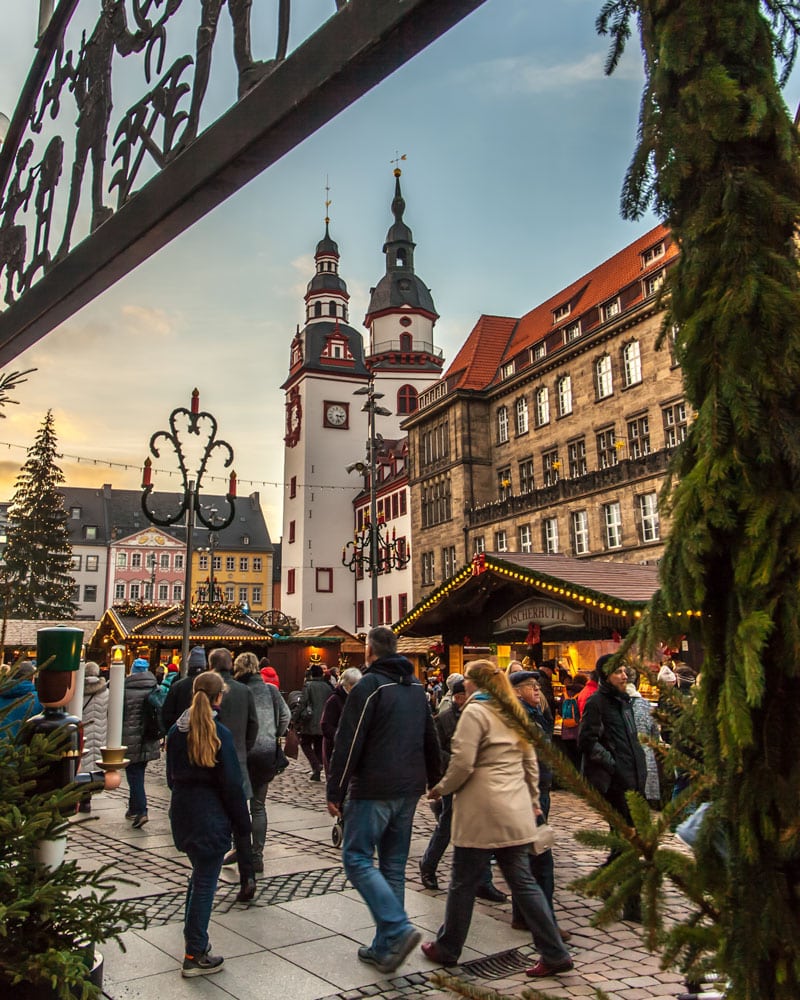
The city also has plenty of history to share, especially regarding the textile industry, with the Chemnitz Museum of Industry being an excellent place to start. But the city brags plenty more museums , ranging from classical and contemporary art to trams, archaeology and natural history.
You’ll also have the chance to learn about the city’s wartime history and the years it was called Karl-Marx-Stadt. Finally, the renaissance riverside Klaffenbach Castle on the city’s peripherals (reachable by City-Bahn) makes for a more historical side trip.
How to get to Chemnitz: By car or train, it’s a little over one hour from Dresden, making it possible as a day trip.

Read More: Underrated cities in Europe
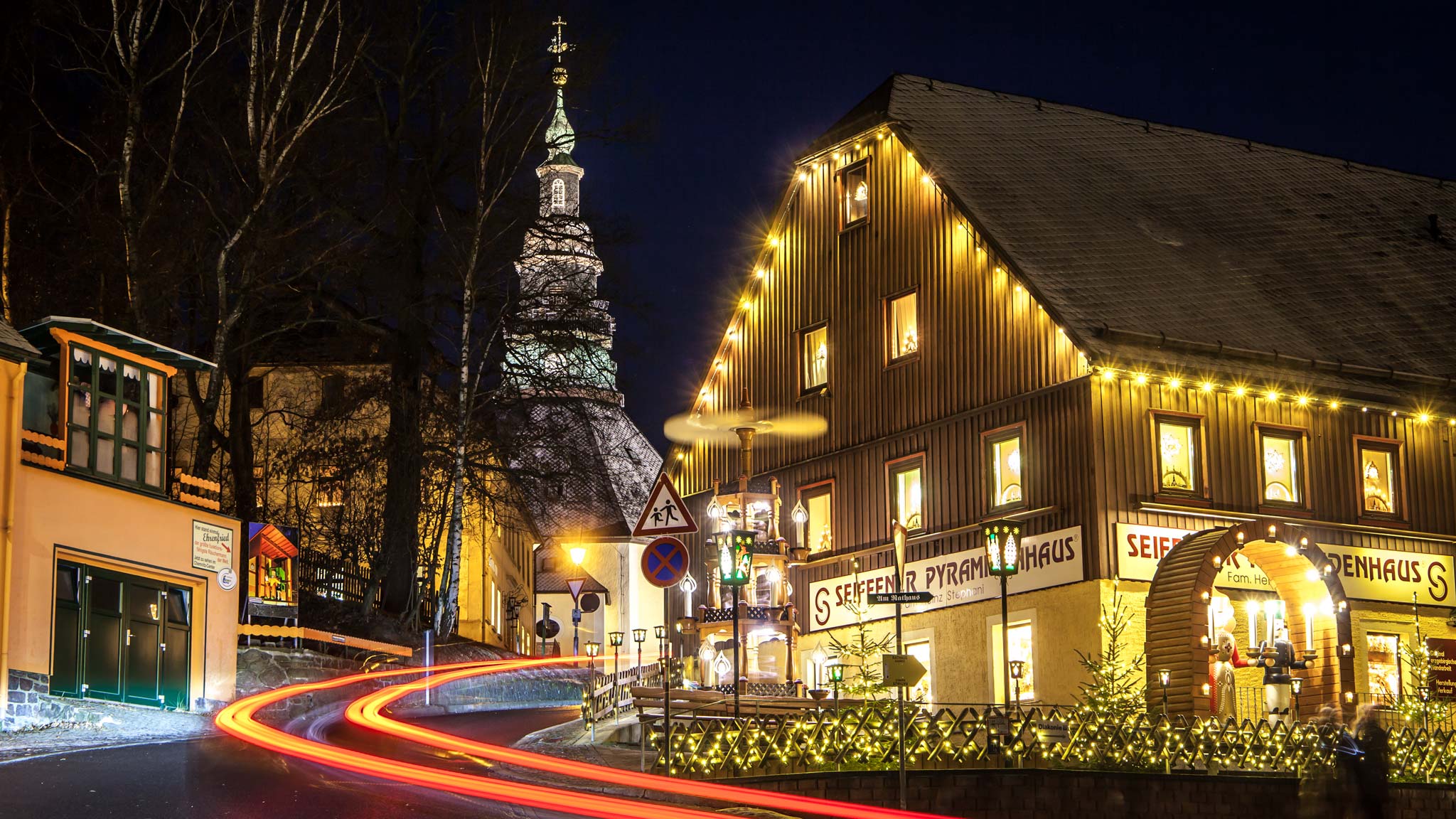
Seiffen and The Ore Mountains
Seiffen, a small valley town tucked away in the Ore Mountains, is Christmas personified. The year-round real-life ‘Santa’s workshop’ is one of the most famous places to visit in Saxony, Germany, to learn about, participate in, and shop for Christmas traditions.
Wooden toys are hand-crafted year-round, winged angels are shaped from porcelain, and in the surrounding small villages and towns, traditional mining traditions live on with special events, many of which are focused during the festive period, making this one of Europe’s top winter destinations .
While this means December is the best time to visit, there are plenty of things to do in Saxony’s Ore Mountains throughout the year. And while winter is all about snow, skiing and Santa, summer is ideal for hiking and mountain biking.
There are also a few castles to visit, adorable villages (Annaberg is one of the prettiest), and a historic steam train to ride. Regardless of when you visit, research the mining traditions and see if any events are on, as this UNESCO-listed history carries plenty of stories.
How to get to Seiffen: If you wish to visit Seiffen and the Ore Mountains as a day trip from Dresden, you’ll want a car as the driving time is around 80 minutes while public transport takes a few hours. Still, if you’re visiting at Christmas, I’d suggest spending at least two days in the Ore Mountains to experience some of the mining traditions in the region.

Read More: Christmas in Seiffen and the Ore Mountains
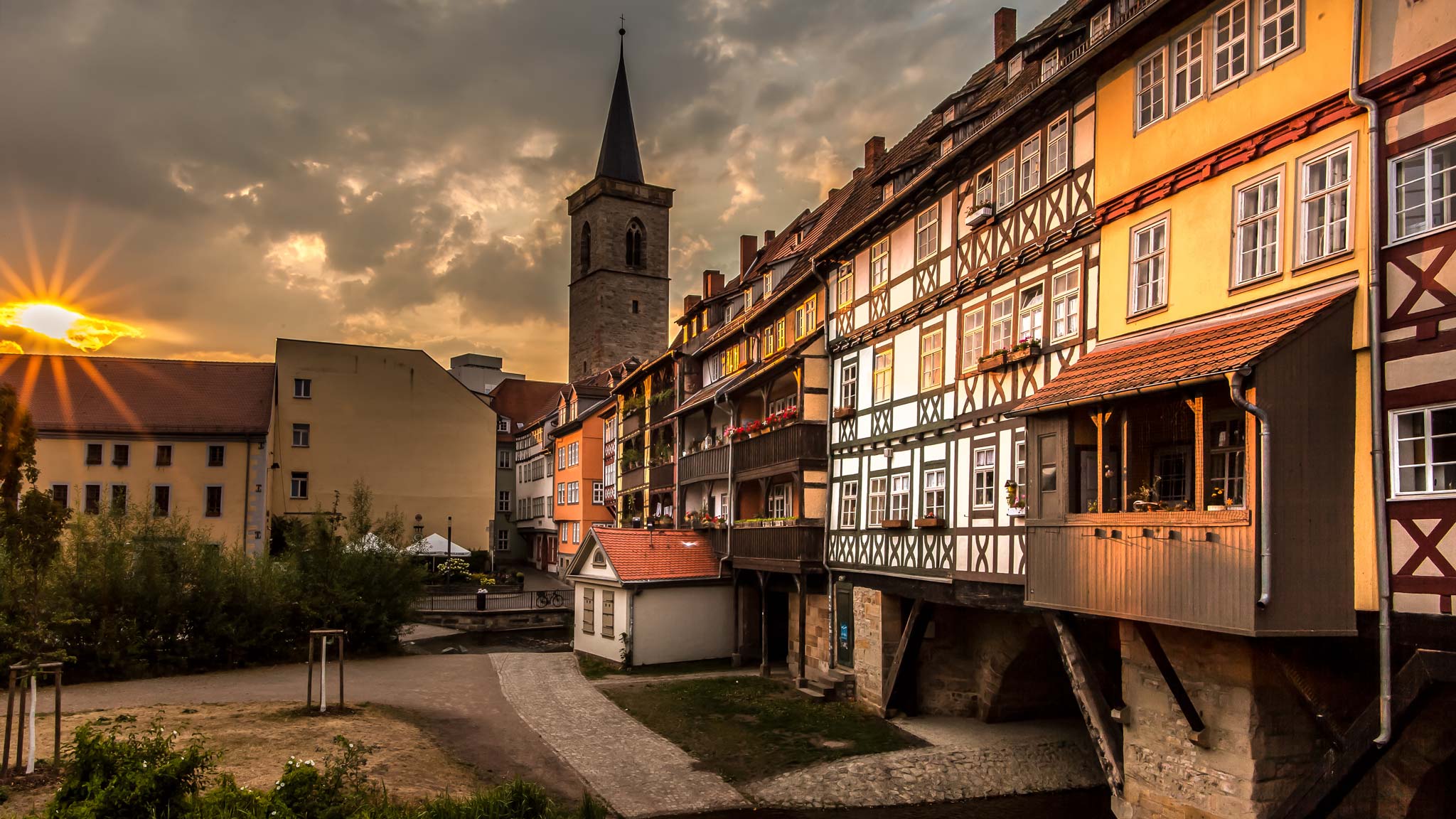
Beyond Saxony: Erfurt and Thuringia
Once you’ve explored all the gems that Saxony, Germany, has to offer, you might want to consider taking a day trip from Dresden to Erfurt in the neighbouring state of Thuringia. Another region decked out with history and heritage, these two regions combined are often referred to as the Cultural Heart of Germany.
In Erfurt, the region’s capital, you’ll find a laid-back city packed with plenty of Martin Luther’s history, as this was the city he studied in. There’s also a hulking cathedral – one of Germany’s finest – alongside a fort and the unique Krämerbrücke (Merchants Bridge), one of the only mediaeval arch bridges in the world lined with shops and houses on either side.
Other popular places to visit in Thuringia include Weimar, fascinating for both the Bauhaus design movement, which hails from the city, and Gotha, rich in Saxe-Coburg and WWII history. The Anna Amalia library in Weimar is also one of the most beautiful libraries in the world , in my opinion.
How to get to Erfurt: From Dresden, it takes around two hours by train, making it possible to visit the city as a long day trip from Dresden. Better still, spend a few days exploring the region of Thuringia. To drive it takes slightly longer.

Read More: Exploring Thuringia, Germany

Related Posts:
- 15 Best Places To Visit in Europe in Winter: Warmest Spots and Winter…
- Traditions, Toys and All the Trimmings: Christmas in Seiffen and…
- 8 Alternative Spa and Wellness Destinations in Europe
- 15 Underrated Cities in Europe You Should Visit
- Austria's Best Cities for Cross-Border City Breaks
- Literacy lovers hideouts: Breathtaking libraries worth travelling for
So much old town charm! I love the cobblestones and the traditional German houses. So beautiful!
It is really good place . I want to be a good torist so I wish i will go SAPER OPERA , With a fire damaging the building heavily less than 20 years later, and then WWII seeing its near destruction, the building has gone through various reconstruction but yet is still regarded as one of Europes most spectacular opera houses.
Leave a Reply
Leave a reply cancel reply.
Your email address will not be published. Required fields are marked *

Hey, I’m Dan…
Sign up for (irregular) updates.
Email Address *
Recent Articles…
- Coffee, Concerts, Courtship & Community: Meet the Cyclists Making Graz The “Bicycle Capital of Austria”
- Escape to the Asitz Mountain, Where Art Meets the Austrian Alps
- Insider’s Guide to Graz Beyond the Unesco Old Town
- In Slovenia’s Vipava Valley, Sustainable Family-Run Wineries, Dining Rooms & Trails Abound
- 11 Fantastic Things To Do in Northern Spain
- The Kumbh Mela in Photos: Postcards From India’s Greatest Gathering
- Summer Highs in Innsbruck, Where the Alps Are for All
- 5 of Portugal’s Best Multi-Day Trails

LostPlace.Club
The Lost Place Club invites you to explore exciting and abandoned places in your area. With precise coordinates and the support of Maps, you can easily and safely navigate to the most breathtaking Lost Places. Find extraordinary places off the beaten path. Let our community guide you on an exciting journey to the most beautiful places.

9 of the best things to do in Dresden

Sep 22, 2022 • 7 min read

From top museum collections to absorbing street art, here are the best activities and experiences in Dresden © Dudarev Mikhail / Shutterstock
Dresden is a city for time-travelers. You can spend a day hopping between beautiful Baroque buildings all the while walking in the footsteps of more recent ghosts that continue to weigh heavy on the city’s soul.
There’s the resplendent Altstadt (Old Town) meticulously reconstructed to its former glory and Christmas Markets that bring light to an otherwise dark time of year. Across the Elbe River, you can find modern Germany with its craft beer, international cuisine and immersive street art. Then, just a short train ride away, sip award-winning wines or head out to the country for some of the most impressive natural views.
Here are the top things to do in Dresden.

1. Climb to the top of Frauenkirche for a panoramic view of the Old Town
Churches in European Old Towns are usually a dime a dozen. But Dresden’s Frauenkirche (Church of Our Lady) stands out for its history and symbolism.
The 18th-century Lutheran Church – along with almost all of Dresden – was destroyed in the fire bombing of 1945. Post-war leaders initially left the church in ruins as a kind of war memorial until the late 1980s when plans for reconstruction began. Using 8000 salvaged stones, the Baroque masterpiece was officially brought back to life in 2005. The golden cross placed atop the dome was constructed by the son of a British pilot who took part in the bombing of Dresden, as an act of reconciliation.
Planning Tip: The viewing platform with spectacular views of the surrounding Neumark is open year-round to visitors. Find the latest information on opening hours and price of admission online .
2. See the inspiration for Kurt Vonnegut's book Slaughterhouse-Five
Kurt Vonnegut is known as one of the most profound and prolific writers in American history. But before he made a name for himself as a writer, he dropped out of Cornell University and enlisted in the US Army to fight in WWII. Captured at the Battle of the Bulge, he was interned in Dresden during the devastating and controversial Allied firebombing of the city that left it in ruins. Vonnegut survived the attack by hiding in a meat locker of the slaughterhouse, hence the name of his breakthrough novel, Slaughterhouse-Five .
Tour guide Danilo Hommel quickly saw the potential to turn Vonnegut’s story into an experiential morning for guests interested in learning more about the author and how themes he touched on in his novel resonate today in Dresden. As part of the tour, you'll also learn more about the destruction of Dresden in February of 1945 and how the city was rebuilt over the following half century.
Planning Tip: Walking into the actual slaughterhouse is not always possible – check with the tour guide in advance for the latest information.

3. Take a stroll around the Zwinger
Dresden, in its reconstructed splendor, is a city to simply immerse yourself, and the Zwinger – a prestigious piece of Baroque architecture right in the center of the city – is arguably the icing on the cake.
Meant to stand as a testimony to the glory of Augustus the Strong’s reign, the Zwinger quickly developed into a cultural hub until it was destroyed in WWII. The Soviets began reconstruction immediately after the war, largely restoring the building to its pre-war state by 1963. Today it’s popular with photo-hungry tourists, collecting different snaps of the exquisite architecture and art within the complex.
For many, standing in the heart of the Zwinger and taking it all in is enough, but if you do enjoy a good museum, the Porzellansammlung (Porcelain Museum) has an invaluable collection of over 20,000 artifacts. The museum’s traditional Chinese and Japanese collections, acquired by Augustus the Strong himself, serve as the main attraction.
Local Tip: Listen for the chimes playing at the Glockenspiel Pavilion every 15 minutes. The melodies are a mix of original compositions by Günter Schwarze and other well-known tunes.
4. Immerse yourself in the art of Kunsthofpassage in Neustadt
Most cities have their street art neighborhoods and for Dresden it’s Neustadt (New Town) just across the Elbe from the Old Town. But this isn't just captivating imagery, Kunsthofpassage is an immersive experience.
There are a number of courtyards accessible through narrow alleyways where you can quite literally walk into the art. In Hof der Elemente (Courtyard of the Elements) there are a series of twisting silver pipes that look like they belong in a Mario video game before they morph into a trumpet. The Hof des Lichts (Courtyard of Light) contains projection screens to allow for multimedia performances alongside metallic mirrors with colorful reflections that change with the sun’s position. Last but not least, there’s the Hof der Fabelwesen (Courtyard of Mythical Creatures), home to artist Viola Schöpe’s paintings and ceramic mosaics of peculiar beings that resemble a blend of Picasso and Ancient Greek art alongside a two-floor tall giraffe and some monkeys.
YouTube video player
5. Snap a sunset panoramic photo at Brühl’s Terrace
Dresden and its photogenic Old Town can be overwhelming for anyone with a camera. The exquisite nature of the city demands to be captured by the lens again and again. For the perfect photography spot, head for Brühl’s Terrace – nicknamed “the balcony of Europe.”
This impressive panoramic terrace stretches approximately 500m (1640ft) with a view over the Elbe River. The name stems from Henrich von Brühl, an 18th-century statesman who led the construction of various ornate buildings in Dresden. Stop by a bit before sunset so you have time to wander around the eastern garden before admiring the Renaissance-style terrace itself.
6. Get lost in Residenzschloss Dresden Castle (or Royal Palace)
This Old Town castle is considered to be one of the most important of the Renaissance period, serving as a cultural and political hub since the 15th century. Today the Residenzschloss houses a variety of museums. There’s the Dresden Armory (Rüstkammer) with its collection of armor and weapons, the Grünes Gewölbe , or Green Vault, home to royal treasures, and the Turkish Chamber with its collection of Ottoman art – one of the largest of its kind outside of Turkey.
At Kupferstich-Kabinett you can find an astounding collection of roughly 500,000 drawings, prints, and sketches by the likes of Rembrandt, Michelangelo, and Germany’s own Albrecht Dürer. If somehow that’s not enough, you can cap it off with the Münzkabinett – literally the coin cabinet – with 300,000 objects from across the globe dating from antiquity to the modern era.
Detour: Explore the Residenzschloss’ royal roots by checking out the east side of the building's exterior where you can find the Fürstenzug mural. This 102m-long (335ft) piece of art displays the 35 rulers of the House of Wetting, stretching from the 12th century up to the final kings of the 19th century.

7. Grab a cup of Glühwein and get into the Christmas spirit at Striezelmarkt
Germany is known for its Christmas markets or Weihnachtsmärkte beginning in late November and stretching through the holiday season in December. You’d be hard-pressed to find a city or village without some kind of Christmas market, complete with food, gifts and of course, Glühwein, the German spin on mulled wine.
If you were to visit just one Christmas market, Dresden’s Striezelmarkt makes a strong case. It's considered by many to be the oldest Christmas market in the country, stretching back nearly 600 years. Visiting Striezelmarkt on the edge of the city's Old Town is like stepping into a winter wonderland, complete with all the sugary sweets and pageantry you can imagine.
8. Sip on a glass of wine at Schloss Wackerbarth
When exploring Germany’s celebrated wine regions, Saxony isn’t usually in the conversation. That is, unless you’re talking about Schloss Wackerbarth.
Just outside of Dresden in the town of Radebeul, you can get to the winery and its romantic rolling hills in a little over 30 minutes from the main train station. The award-winning Wackerbarth is one of Europe’s oldest producers of sparkling wine, with a deserved renowned reputation. Fancy a glass? Tours are available daily from April through December and Tuesday to Sunday between January and March. Get a tasting for €15 per person.
9. Hike across the Bastei in Saxon Switzerland National Park
Saxon Switzerland National Park is one of the best national parks in all of Germany, and it’s right in Dresden’s backyard.
From the main train station, hop on the regional EC train for a 25-minute ride to the charming spa town of Bad Schandau, tucked in between some of the best sights the national park has to offer. Or take the S1 train 38 minutes to Kurort Rathen for direct access to hiking the Bastei, an incredible rock formation standing nearly 200m (656ft) over the Elbe River with an arched sandstone bridge. For a longer stay, head out along the 116km-long (72 mile) Malerweg hiking trail divided into eight stages. Rock climbing is another option for experiencing the park up close.
Local Tip: Summer crowds can get overwhelming at Bastei. But you can get similar views without the crowds by going further east into the park towards Schrammsteinaussicht along the Malerweg long-distance hiking trail.
Explore related stories

May 10, 2024 • 9 min read
From cities to countryside to high mountain peaks, experience the best of Germany with these top things to do.

Nov 1, 2023 • 15 min read
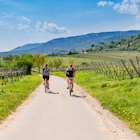
Jul 25, 2024 • 6 min read

Jun 7, 2024 • 8 min read

Nov 24, 2023 • 5 min read

Aug 7, 2023 • 4 min read

Jul 13, 2023 • 8 min read

May 16, 2022 • 6 min read

Jun 25, 2021 • 6 min read

Feb 3, 2020 • 6 min read

19 Top-Rated Attractions & Things to Do in Dresden
Written by Barbara Radcliffe Rogers Updated Dec 27, 2023
Dresden, one of Europe's greatest Baroque cities, about 30 kilometers north of the border with the Czech Republic, stands majestically astride the Elbe River. It was the seat of the Saxon rulers, who lavished their attention on its riverside palaces and soaring churches, and left the city with their vast collections of art and antiquities.
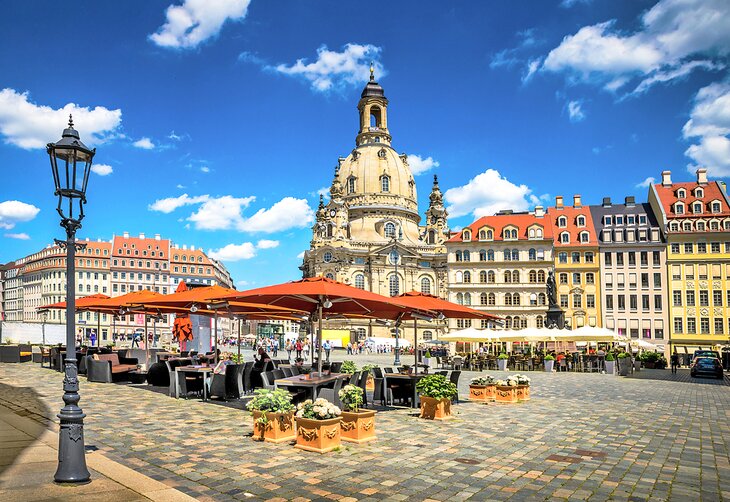
This wealth of historic artifacts — it even includes beautifully preserved royal clothing — is displayed today in world-class museums. However rich Dresden's treasures and proud its heritage, modern history has not been kind to the city. Dresden suffered the double blow of almost complete destruction in World War II, followed by 45 years of postwar neglect under the Soviet regime.
It's hard to believe all this from the Dresden you see today. It has risen from its ashes and bears few scars from its late 20th-century trauma. Palaces glitter, gardens bloom, and the dome of the magnificently restored Frauenkirche again stands out above the skyline.
With its wealth of museums, palaces, and other tourist attractions, there are plenty of things to do in Dresden. But don't spend all your time hurrying between these points of interest; take time to stroll along Brühl's Terrace, admire the river from one of its bridges, and smell the roses in its romantic gardens. You can find the best places to visit in this gracious and beautiful city with this list of the top tourist attractions and things to do in Dresden.
Dresden Frauenkirche
Dresden royal palace and museums, zwinger and old masters picture gallery, semper opera and theaterplatz, the great garden and zoo, stroll along brühl's terrace, pillnitz palace and gardens, dresden kulturpalast, the georgentor and the procession of princes, the japanese palace and the golden horseman, cruise the elbe on a paddlewheeler, hike in saxon switzerland, take a day trip to meissen, dresden transport museum, shopping and gallery hopping in the neustadt, moritzburg palace, a weekend getaway in the erzgebirge, the german hygiene museum.
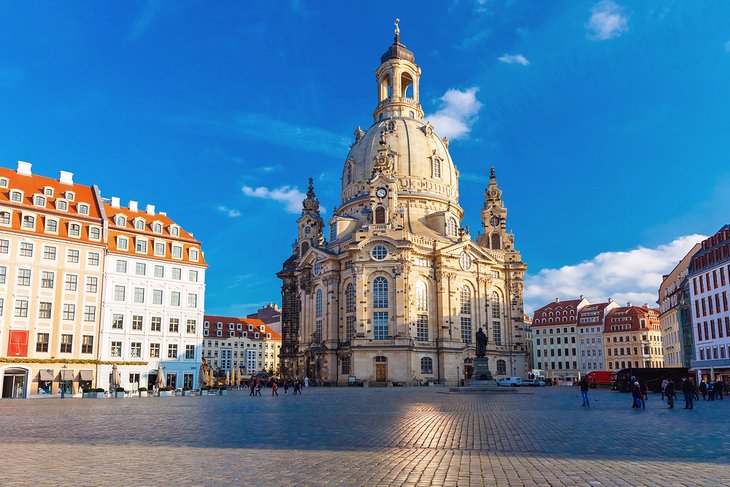
Dresden's spectacular Frauenkirche is one of the most remarkable reconstruction projects ever to have taken place in Germany, if not the world. Completed in 1743, the spectacular Baroque original was considered one of the most beautiful churches in Europe. After its destruction during Allied bombing in 1945, the ruins of the old building were cataloged and stored for use in its reconstruction.
After the reunification of Germany in 1990, plans to rebuild developed rapidly, and when it reopened in 2005, nearly 4,000 original stones had been included. Topping it all - and as a symbol of international goodwill - was a gold cross provided by Great Britain, whose bomb had wrought much of the devastation.
The vast interior is simply spectacular. The restored high altar is a fantasy of Baroque flourishes highlighted in gold, and tier after tier of galleries rings its walls. You can take an elevator to the dome for views of the city, participate in worship services (once a month in English) and listen to one of the more than 100 concerts performed here each year.
Stop for a reflective moment to look at the cross that once topped the dome, its twisted remains found amid the rubble. An exhibition describes the reconstruction project, which was funded by contributions from all over the world. Guided tours are available.
Address: Georg-Treu-Platz 3, 01067 Dresden
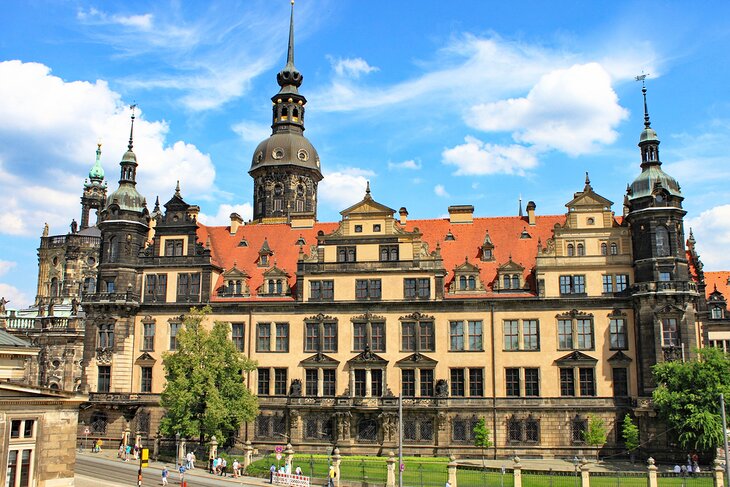
If you have time to see nothing else in Dresden, it should be this and the Frauenkirche. One of Europe's richest and probably its oldest public museum (although the Vatican disputes this), the Dresden State Art Collection , inside the Dresden Royal Palace , is also one of its most modern and forward-looking in terms of displaying and interpreting its treasures for visitors.
Priceless art, opulent court clothing, intricate needlework, even Augustus the Strong's personal garden tools are shown and their significance explained. All the detailed labeling and background information is also in English, and cases housing the dazzling collections from the fabled Green Vault are in non-reflective glass, so you can admire (and photograph) them from all sides with a clear view from every angle.
The original Green Vault, largely destroyed with the rest of the palace in World War II, has been reconstructed to house parts of the collection in their original settings. This extraordinary collection includes masterpieces of gold, silver, jewelry, and ivory from the 14th to 18th centuries, all of which had been removed to safety at the onset of the war.
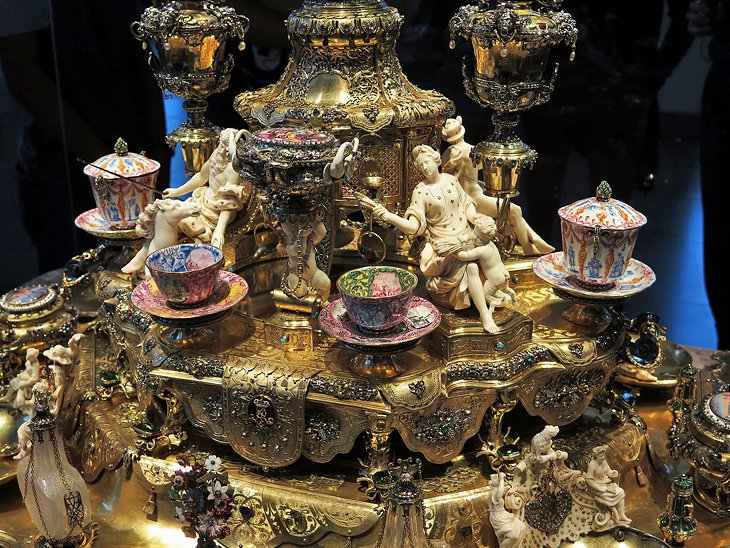
From 1485, the castle was the home of Saxony's electors and kings, and it was Augustus the Strong who decided that the royal collections should be open for the public to enjoy. In 1723, he began to turn the formerly private treasure chambers into a public museum.
In addition to the treasures of the Green Vault, the Turkish Chamber , established in 1614, houses one of the world's largest collections of artifacts from the Ottoman Empire. Other collections include the Numismatic Cabinet of medals and seals; the Dresden Armory of weapons and armor; and the Print Cabinet , containing graphic art, drawings, watercolors, and pastels by European artists from the 15th century onward.
Not content to imitate the delicate, original Renaissance sgraffito decoration on the exterior walls with painted designs, Dresden has chosen instead to replicate it exactly, and master stone artists are still painstakingly engraving the intricate designs into the stone. In the courtyard, step close to the decorated walls to appreciate the detail of the carved lines.
Address: Taschenberg 2, 01067 Dresden
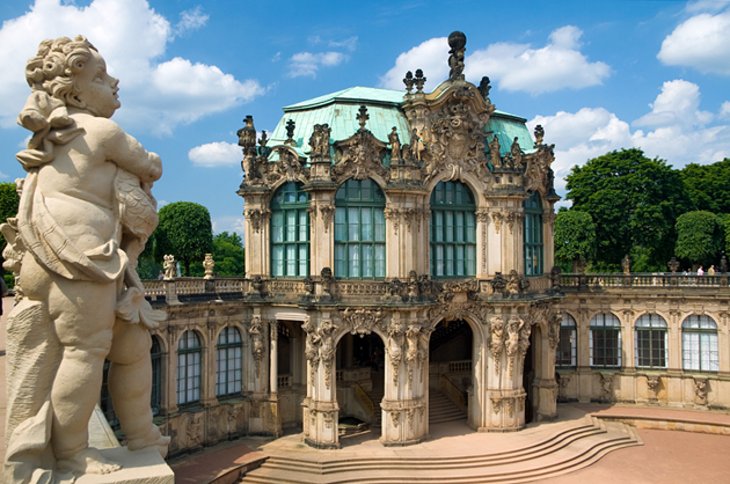
The Zwinger — a magnificent early 18th-century palace in the center of the city beside the Elbe — is one of the finest examples of Baroque architecture in Germany. It's worth walking around the outside just to appreciate its architecture. On its south side is the majestic 32-bayed Long Gallery, and flanking it to the east and west are four symmetrically arranged pavilions, the Wallpavillon and the Nymphenbad (Bath of the Nymphs), with its graceful fountains and mythological figures.
Aside from its impressive architecture, the Zwinger houses more of the Dresden State Art Collections. These include the Dresden Porcelain Collection and scientific instruments in the Royal Cabinet of Mathematical and Physical Instruments .
In the new Zwinger Xperience exhibit, you can immerse yourself in festivals, parades, and the drama of the remarkable building through panorama projections and virtual reality stations.
The Old Masters Picture Gallery, the Gemäldegalerie Alte Meister , features about 750 paintings from the 15th to the 18th centuries, among them Italian Renaissance and Baroque masterpieces by Raphael, Titian, Correggio, and Tintoretto. The collection of Dutch and Flemish paintings includes works by Rembrandt, Rubens, Van Dyck, and Vermeer.
Address: Sophienstraße, 01067 Dresden /
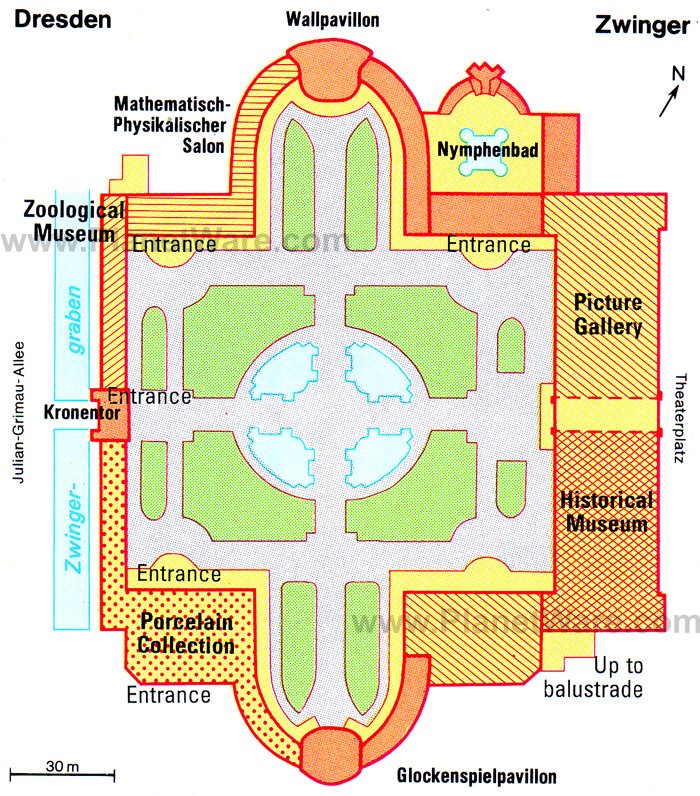
The west side of Dresden's Theaterplatz, one of Germany's finest public squares, is dominated by the magnificent Semperoper , the city's opera house, built in the style of the Italian High Renaissance. To see the lavishly decorated interior, either attend a performance (which includes concerts, ballet, and opera) or take a spirited tour led by one of the staff, who will share tales of some of the great performers and guests as you tour.
In the center of Theaterplatz stands an equestrian statue from 1883 of King John, and at the southeast corner stands the Altstädter Wache, the Old Town Guard-House , built in 1831 and modeled on the famous Guardhouse in Berlin . To the southeast is the Taschenbergpalais , a Baroque palace dating from 1711.
Address: Theaterplatz 2, 01067 Dresden
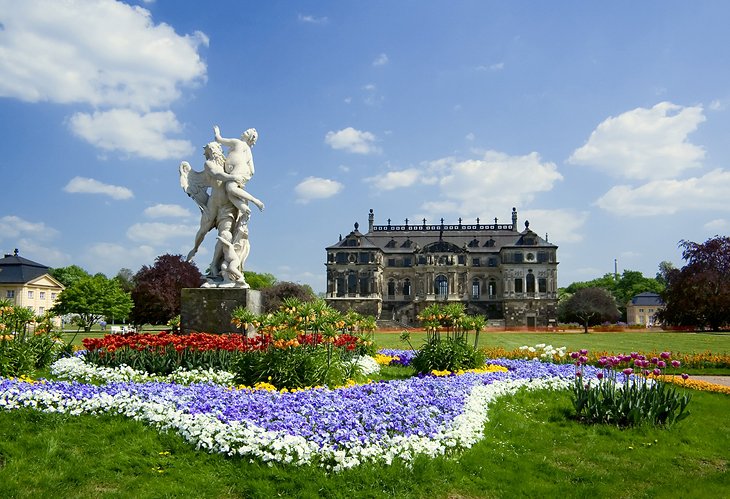
The lovely Great Garden (Großer Garten) was laid out in the French Baroque style beginning in 1676 and has been open to the public since 1814. The Sommerpalais , built between 1678 and 1683, is one of the earliest Baroque palaces in Germany. Also in the park are the Dresden Zoo and the Dresden Botanical Garden , where more than 10,000 species are arranged geographically for a world tour of plant life.
The Dresden Zoo, one of Germany's oldest, is home to more than 1,500 animals, representing all the continents. Through large glass panels, you can watch Humboldt penguins swim, and both the ring-tailed lemur island and the Tundra aviary are visitor accessible. More than 450 plants and trees keep the Africa House looking like home for the elephants.
Along with the zoo, another attraction for families is the miniature railway, the six-kilometer-long Parkeisenbahn, staffed largely by children. It is a good way to get from one attraction to another and to the frequent concerts and performances that are held in the park. Of interest to car enthusiasts is Volkswagen's Transparent Factory , an assembly plant that offers tours of the manufacturing and assembly processes.
Address: Hauptallee 8, 01219 Dresden
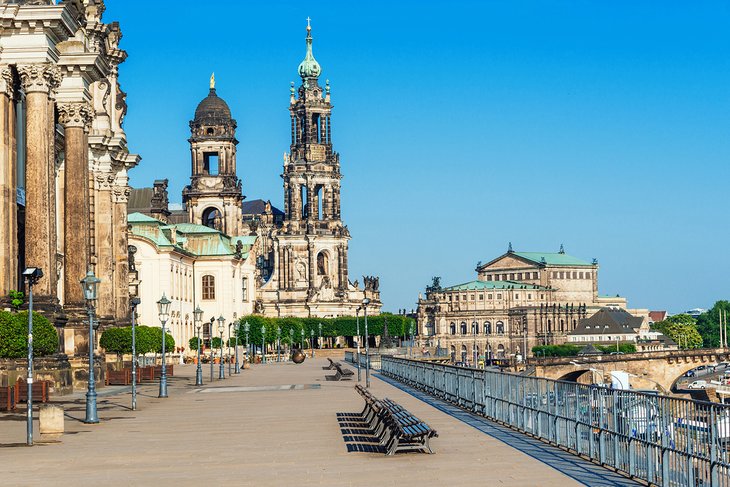
No trip to Dresden is complete without a stroll along Brühl's Terrace, or Brühlsche Terrasse, also known as the "Balcony of Europe." Approached from the Schlossplatz by a broad flight of steps, this area on the site of the old city ramparts was laid out in 1738 as a private garden, and opened to the public in 1814.
The sculptured groups on the staircase represent morning, noon, evening, and night, and the Dolphin Fountain is the only part left of the original garden. Bordering part of this promenade is the College of Art , built in 1894. The Moritz Monument , the oldest one surviving in Dresden, was erected in 1553. Below, the Terrassenufer on the banks of the Elbe is the main landing stage for cruise boats.
Address: Georg-Treu-Platz 1, 01067 Dresden
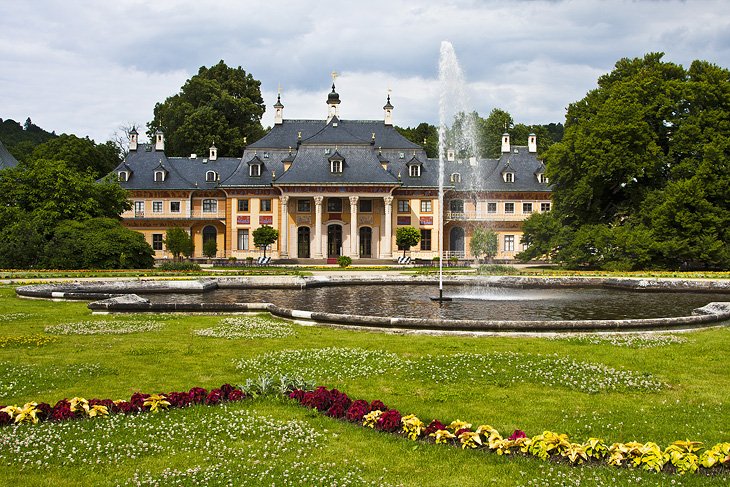
In the 1720s, Augustus the Strong ordered a pair of Baroque summer palaces built beside the Elbe, where he could entertain at costume parties and sporting contests. Decorated in the then-popular Chinoiserie style, they face each other across a garden.
Schloss Pillnitz later became the royal family's summer residence, and in 1820 the Neoclassical New Palace was built, forming the third side of the Pleasure Garden . During all this time, the gardens grew and expanded across the estate, each new addition reflecting the tastes and styles of its era, until they stretched across much of the 77-acre park.
Apart from the beauty of their design, their charm lies in the way the Baroque, Neoclassical, and English landscape styles merge harmoniously. Wander through them to find hedge gardens; wooded landscapes; an English Pavilion reflected in a lily pond; a Chinese garden: a tropical Palm House, and the garden's prized possession, one of Europe's oldest camellia trees , now almost 30 meters tall.
The palaces are worth touring, both for their Chinese-inspired decorations and for the museums they house. The Museum of Decorative Arts and the Crafts Museum contain furniture, musical instruments, glass, pewter, porcelain, and textiles from State Arts Collections, and there is a reconstruction of the New Palace kitchens .
You can get to Pillnitz from Dresden by bus, but the best way to arrive is by paddle steamer , floating along the Elbe, under the famed Blue Wonder Bridge and past the three Schlösser (castles) on the Elbe: the late Neoclassical Albrechtsberg , Lignerschloss (built in 1850), and the Neo-Gothic Schloss Eckberg (built 1859-61).
Address: August-Böckstiegel-Straße 2, 01326 Dresden
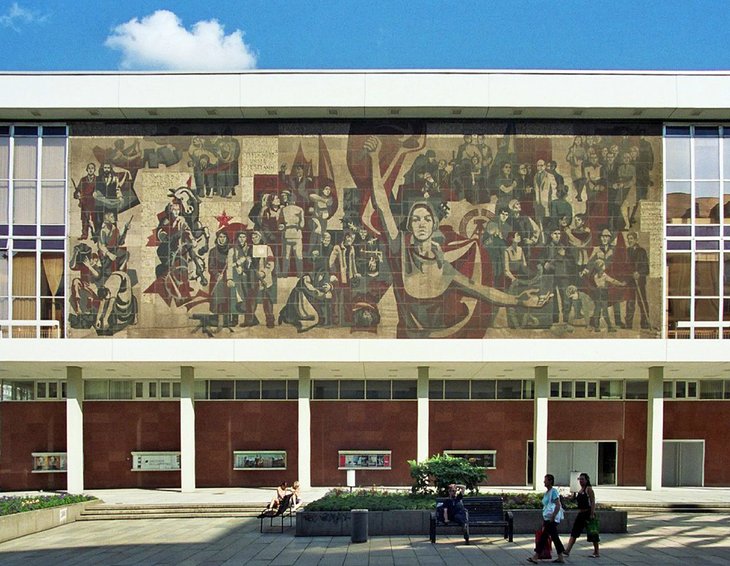
The pride of GDR architecture when it opened in 1969 as a "House of Socialist Culture" during the Soviet era, the Dresden Kulturpalast was given new life in a complete redesign of its interior as a state-of-the-art home for the Dresden Philharmonic. After some controversy, its overtly Soviet exterior mural "The Red Flag" and the wall fresco "Our Socialist Life" were retained, a rare glimpse of GDR Dresden.
While the exterior may be in the spirit of Eastern Modernism, the interior of the auditorium is strikingly 21 st -century, with dramatic red seats descending in layers to the central podium, and folded ceilings and walls to provide outstanding acoustics.
In contrast to the classical sounds of the Dresden Philharmonic, the Kulturpalasat will be home to Die Herkuleskeule cabaret theater , known as one of Germany's best.
Address: Schloßstraße 2, 01067 Dresden
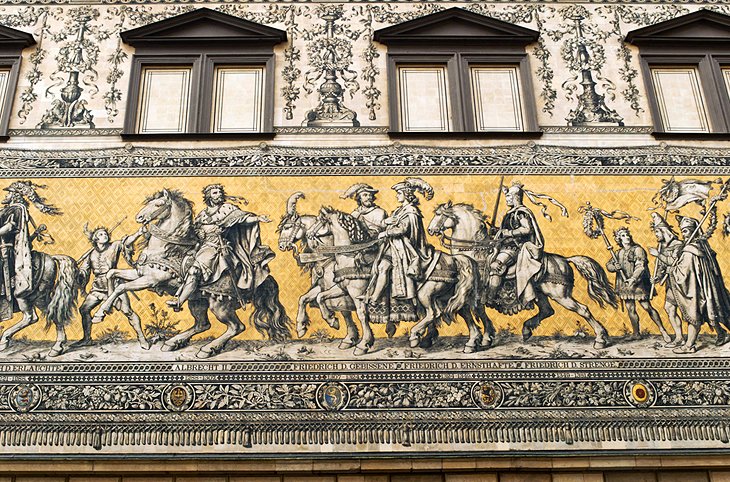
The Georgentor, or Georgenbau, was the original city exit to the Elbe Bridge and the first of the city's many Renaissance buildings. On the west side is a doorway from the original building with its rich sculptural decoration, including an equestrian statue of Duke George. Also of interest is the Langer Gang , a long wing linking the Georgenbau with the Johanneum that was built in 1591.
Along its inner side is a long Tuscan-style arcade, with 22 rounded arches, leading to the Court Stables. Its most important attraction, however, is the famous Fürstenzug - the Procession of Princes - a 102-meter-long portrait of the Dukes, Electors, and Kings of the house of Wettin, together with leading German figures from the arts and sciences. Commissioned in 1870, it consists of 25,000 Meissen Porcelain tiles.
Address: Schloßstraße 1, 01067 Dresden
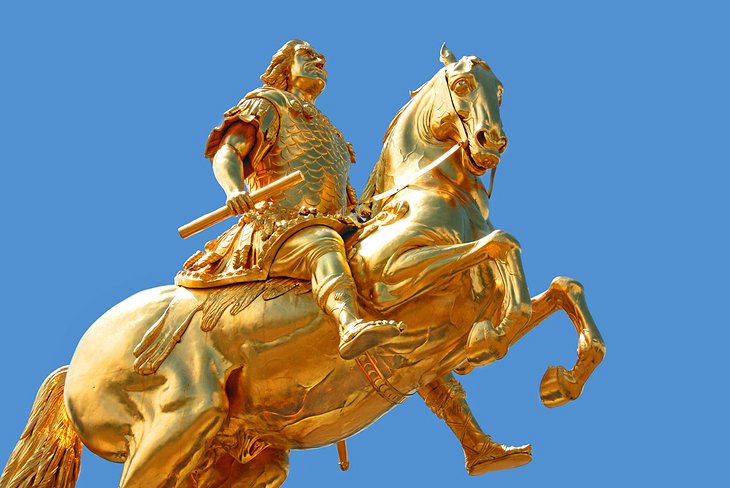
In the Neustädter Markt, across the river in Dresden Neustadt (the city's newer district) is the statue of Augustus the Strong in the pose of a Caesar, wearing Roman armor and seated on a horse. Made in 1736, it's commonly known as the Golden Horseman and is one of the city's most popular landmarks. It sits at the beginning of a long Hauptstrasse, a wide boulevard with a tree-lined promenade at its center, a popular place for an evening stroll.
Also here is the Japanese Palace, or Japanisches Palais, a Baroque and Neoclassical-style mansion, built in 1737. Richly decked with Chinoiserie, it was built to house Augustus the Strong's collection of porcelain (now the Dresden Porcelain Collection), but now houses the State Museum for Prehistory and the Museum of Ethnology Dresden . Another nearby attraction, housed in the 16th-century Jägerhof, is the Saxon Museum of Folk Art .
Address: Palaisplatz 11, 01097 Dresden
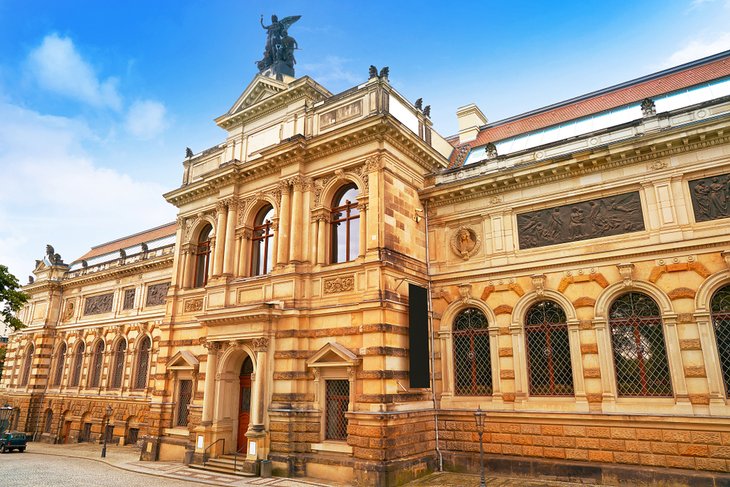
Built between 1884 and 1887, the Renaissance Revival Albertinum on Brühl's Terrace is as spectacular as the world-class art collection it houses. The museum is best known for its impressive New Masters Gallery , with its rich collection of works of the Romantic and Realist periods, as well as French, Polish, Romanian, Hungarian, and Belgian paintings of the 19th century and German Impressionists and Expressionists.
Artists and styles represented range from Degas and Goya to Max Liebermann. Other highlights are the Sculpture Collection , including examples from Egypt and western Asia as well as Greek, Roman, and Etruscan work.
Address: Skulpturensammlung, Albertinum Tzschirnerplatz 2, D-01067 Dresden
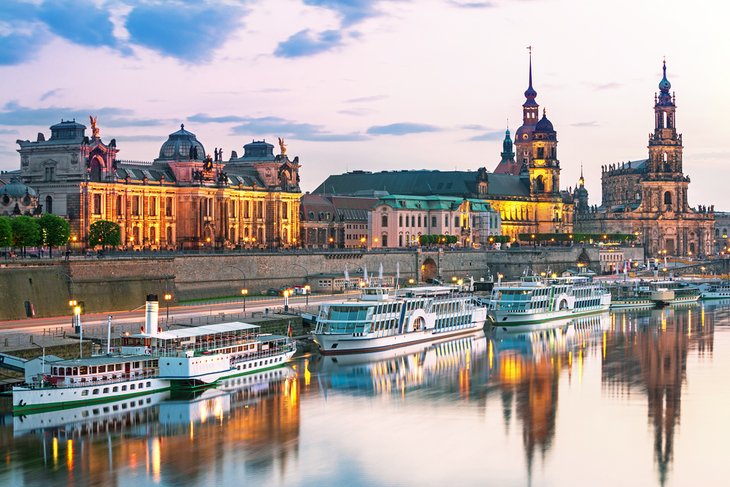
The Elbe flows through the center of Dresden, and along its shore, under Brühl's Terrace, are moored a fleet of paddlewheel steamships and other excursion boats of the Sächsische Dampfschiffahrt, Saxon Steamship Company . Cruises range from 90-minute tours of the city and its surroundings to longer trips that take you beneath the dramatic rock towers of Saxon Switzerland.
You can also buy tickets for travel between 14 towns along the Elbe, a good way to get to Meissen or to the Pilnitz Palace. A day ticket that allows you to hop on and off whenever you like is a good way to spend a day exploring the Elbe towns. Lunch and romantic evening cruises, as well as special themed departures, are another option for seeing the river.
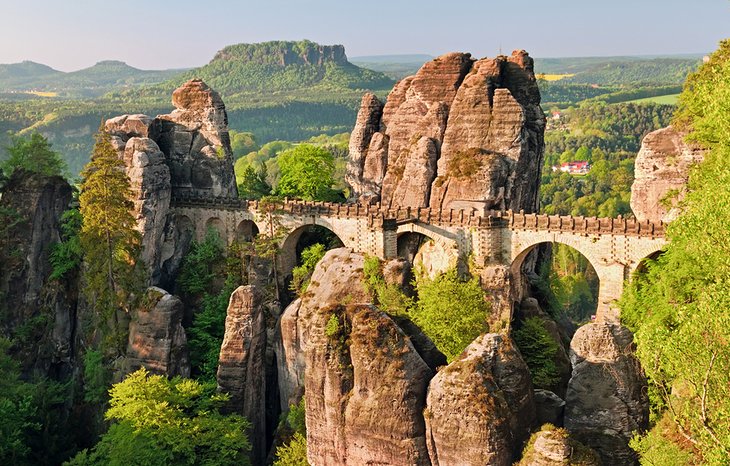
A favorite day trip from Dresden is to Saxon Switzerland National Park , only 30 kilometers southeast of Dresden, a wild landscape of soaring limestone pillars, with views straight down to the Elbe. Walking trails form a network throughout the park, with paths for all levels of energy, and since 1898, a little tram has carried tourists between the village of Bad Schandau and the waterfall at Lichtenhain .
The most famous sight is the Bastei Bridge , a 76-meter-high stone arched bridge that connects the rock formations. You can hike there or reach it by public transportation.
There are several ways to get to Saxon Switzerland from Dresden: by car, by S-Bahn trains that leave Dresden twice each hour, by excursion boats, or by one of the world's oldest paddle wheel steamboats (the most romantic way).
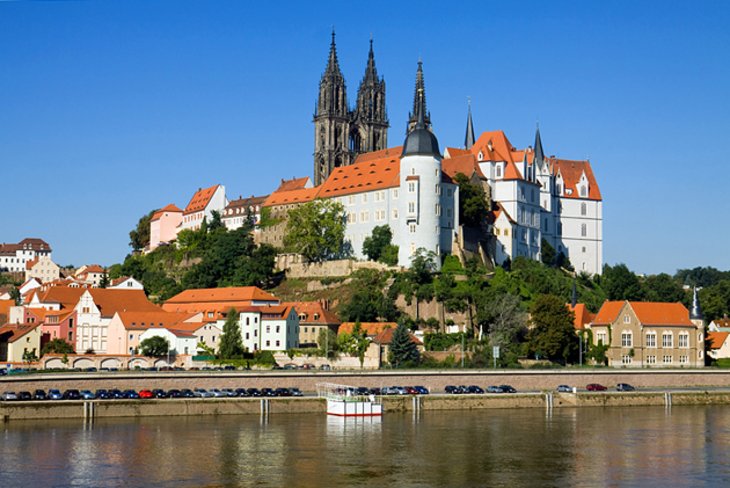
Only 30 kilometers to the west and easy to reach on a day trip from Dresden, Meissen was once the seat of the long-reigning Wettin dynasty. They made their home in the Albrechtsburg Castle , which towers above the town and river atop a high hill (the climb through narrow lanes is picturesque but steep - you can avoid it by riding the funicular).
Founded in the 15th century, the castle is one of the finest secular buildings of the Late Gothic period, and its most notable feature is its large spiral staircase. Inside, the rooms have richly decorated vaulting and ceilings, with paintings dating from 1870. Adjoining it atop the crag is the Early Gothic Meissen Cathedral , dating from 1260.
It is an almost pure Gothic building, with nothing but its Protestant pulpit, pews, and organ changed from its medieval appearance. The original front entrance was closed to preserve the early graves in the floor.
Meissen has long been famous for its porcelain, and a top tourist attraction is the Porcelain Factory . A tour there not only includes a look at examples of their work over the past 300 years, but a chance to watch as skilled artists mold objects, sculpt the delicate blossoms, and figures that adorn Meissen figurines and paint flowers on plates and teacups.
The silver mining town of Freiberg , about 40 kilometers southwest of Dresden, is also home to a stunning cathedral, a Late Gothic hall-church with the oldest and largest surviving Silbermann organ in Saxony. The town's historic center is listed as a national monument.
Address: Domplatz 1, D-01662 Meissen
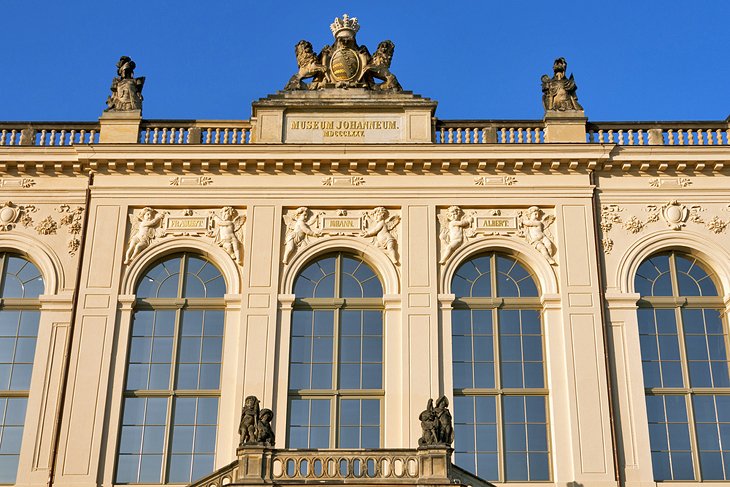
In the Johanneum, one of the oldest buildings in Dresden's Neumarkt, is the Transport Museum, or Verkehrsmuseum. Historic vehicles, including aircraft, steam engines, cars, motorbikes, and watercraft are displayed in engaging exhibits. The navigation exhibit, entered through a stylized ship's hull, explores 1,000 years of maritime history, its technology, and the people who lived and worked on the rivers and seas.
Other exhibits detail the progress of road transport from before the invention of motorized vehicles to the present, and a third follows the development of railways. A model railroad covers 325 square meters, with 26 locomotives pulling 115 cars through detailed models of Saxon villages and countryside. Nearby is the Peace Fountain, as well as the Bundeswehr Military History Museum , the museum of the German armed forces.
Address: Augustusstraße 1, 01067 Dresden
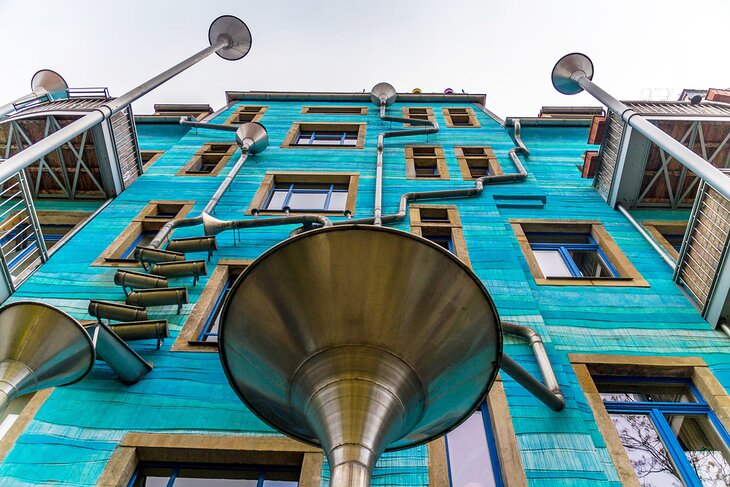
After a fire destroyed Altendresden on the right bank of the Elbe in 1685, the new town (Neustadt) was built in the Baroque style. After major bombing in World War II, this Neustadt was again rebuilt, restoring its Baroque architecture.
Behind its rows of elegant patrician homes hide courtyards that today house restaurants, boutiques, and shops. These courtyards and their passageways are popular places to go shopping, with Dresden's highest concentration of artisan studios and shops.
Stroll through the arcades that have developed in the Baroque townhouses at Hauptstrasse 9 through 19 to find handcrafts, artworks, fine gifts, and restaurants. Look here for original one-of-a-kind works and traditional crafts of the region (remember this is where many of Germany's Christmas decorations originated), and expect to see some being created as you watch.
Not far away, the Kunsthof Passage (Art Courtyard Passage) connects Alaunstrasse 70 with Görlitzer Strasse 21-25. In this enclave of five joined courtyards, you'll feel as though you have entered another world, a Bohemian one of art, color, whimsey, and, above all, creativity. Art galleries, studios, shops, and cafés fill five courtyards, each in a different and colorful theme.
In one, the drainpipes and spouts on a building front have been diverted to create musical instruments that play when it rains. Another courtyard is themed around animals, with bas-relief monkeys cavorting between the balconies.
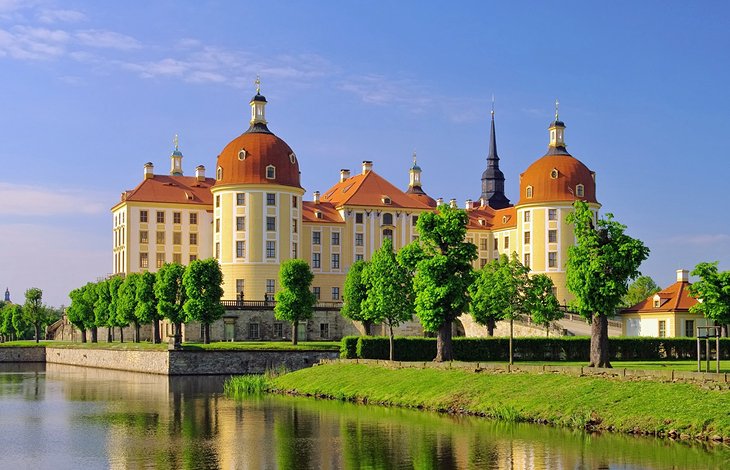
About 14 kilometers northwest of Dresden is the remarkable Schloss Moritzburg , an Electoral hunting lodge and summer palace in the ochre and white of Saxon Baroque. Begun in 1544 as a modest hunting lodge, this stunning palace was given its present form between 1723 and 1736, with Baroque statues added on the balustrades of the carriage ramp and terrace. The decoration and furnishings of the interior, including hunting trophies and paintings, are preserved unaltered.
Also on the grounds is Little Pheasant Castle , an 18th-century hunting lodge whose extraordinary interior is decorated with rare Rococo finishes : inlaid paneling of exotic woods; mural paintings on canvas; painted and gilded ceiling stucco; painted wood and plaster; faux marble; and walls finished in embroidered silk, feathers, and a remarkable combination of straw and pearls. This rare interior has recently been restored by the World Monuments Fund.
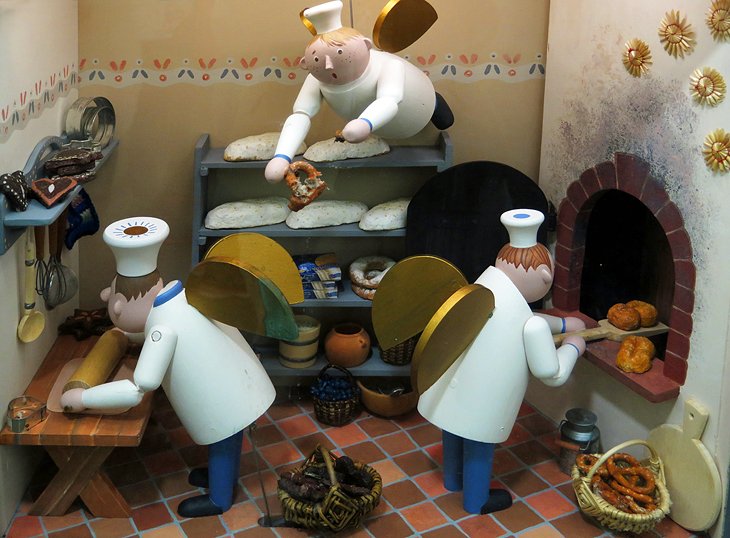
It's Christmas all year-round in the Erzgebirge, or Ore Mountains, about 90 minutes from Dresden and one of the most fascinating and little-known regions in Saxony. The long mining history led to a wooden Christmas ornament industry, which has remained active long after the mines closed.
The central town in the region is Annaberg-Buchholz, crowned by the magnificent St. Annenkirche , a landmark with its 78-meter-high tower. Like much else in the town, the interior of the church is decorated with exceptionally fine woodcarvings . Opposite is a historical museum where you can enter an actual mine, one of the many that lie beneath the ground here.
To see more examples of the woodcarving the region is famed for (many traditional German Christmas folk arts — wooden arches, Christmas carousels, wood-shaving ornaments, and wooden angels to name a few — originated here) visit the Manufaktur der Träume (maker of dreams), a museum filled with stunning examples of carved and painted Christmas and other decorations and toys.
Just outside the Old Town, the Frohnauer Hammer is a museum that includes a fascinating iron-working mill driven by water power.
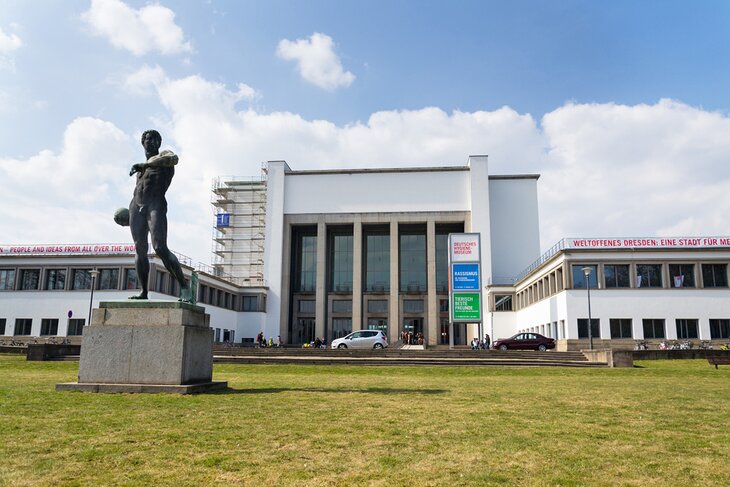
To the southeast of Dresden's old town is Lingnerplatz, home to the German Hygiene Museum (Deutsches Hygiene-Museum), an institution founded in 1912 to promote health education and healthy living. The museum is more interesting than you'd expect from its name - it's really a museum dedicated to medicine and medical practices.
Among its many interesting exhibits are the famous Glass Woman, first displayed in 1930; a permanent exhibit dealing with the human race; and a fun interactive children's museum that focuses on the senses.
Address: Lingnerplatz 1, 01069 Dresden
More Related Articles on PlanetWare.com
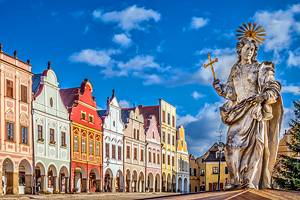
Places to Visit near Dresden: An easy train or car trip away, Leipzig is also a center of art and culture, and the leading city in Saxony after Dresden. Not far south of Dresden is Prague , the capital of the Czech Republic , crowned by the beautiful Prague Castle .
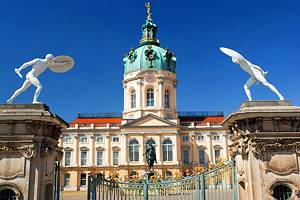
Where to Go from Dresden: To the north and connected by direct rail and highways is Berlin , the capital of Germany and its largest city, filled with museums and art galleries . Close to Berlin is Potsdam , like Dresden a city filled with royal palaces.
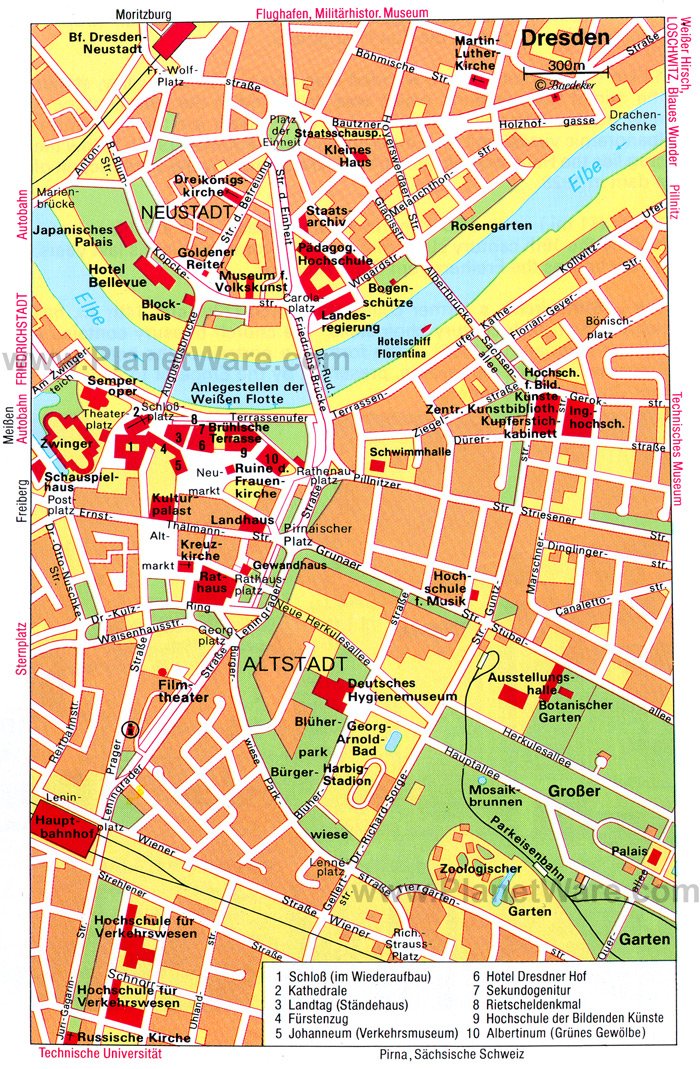
More on Germany


The 28 most historic buildings and sites in Dresden
Navigate forward to interact with the calendar and select a date. Press the question mark key to get the keyboard shortcuts for changing dates.
Navigate backward to interact with the calendar and select a date. Press the question mark key to get the keyboard shortcuts for changing dates.
Dresden, often referred to as the 'Florence on the Elbe,' is a city steeped in history and architectural beauty. From its stunning baroque churches to its grand palaces, every corner of this vibrant city tells a story of resilience and artistic achievement. The Frauenkirche, with its magnificent dome, stands as a symbol of hope and renewal after the devastation of World War II, while the Zwinger Palace showcases the opulence of Saxon royalty through its exquisite museums and gardens. As you wander through the cobblestone streets, you'll discover a blend of old-world charm and modern vibrancy that makes Dresden a captivating destination for history enthusiasts and casual travelers alike.
The Wanderlog team is passionate about uncovering the rich tapestry of culture and heritage that Dresden has to offer. Whether you're marveling at the intricate details of the Historic Green Vault or enjoying a performance at the renowned Semperoper, there's something for everyone in this remarkable city. Don't miss the chance to stroll along Brühl's Terrace, where you can soak in breathtaking views of the Elbe River and the city's stunning skyline. Join us as we explore some of the most historic buildings and sites that make Dresden a must-visit destination.

Attractions

1 Frauenkirche Dresden
2 Dresden Zwinger

3 Semperoper Dresden
4 green vault, 5 albertinum, 7 german hygiene museum, 8 fürstenzug, 9 brühl's terrace, 10 old masters picture gallery, 11 dresden castle, 12 kathedrale sanctissimae trinitatis, 13 dresden transport museum, 14 georgentor, 15 japanisches palais, 16 hausmannsturm, dresden, 17 wandbild am kulturpalast, 18 golden rider, 19 pillnitz castle, 20 moritzburg castle, 21 julius otto monument, 22 albrechtsberg palace, 23 kunsthalle im lipsiusbau, 24 zitronenpresse (oktogon. kunsthalle der hfbk dresden), 25 memorial for fallen rider guards of world war i, 26 wachwitz, 27 denkmal "friedrich august dem gerechten", 28 körner denkmal, top searches in dresden, popular road trips from dresden, what's the weather like in dresden.
It depends on when you visit! We've compiled data from NASA on what the weather is like in Dresden for each month of the year: see the links below for more information.
- Weather in Dresden in January
- Weather in Dresden in February
- Weather in Dresden in March
- Weather in Dresden in April
- Weather in Dresden in May
- Weather in Dresden in June
- Weather in Dresden in July
- Weather in Dresden in August
- Weather in Dresden in September
- Weather in Dresden in October
- Weather in Dresden in November
- Weather in Dresden in December
All road trips from Dresden
- Dresden to Berlin drive
- Dresden to Prague drive
- Dresden to London drive
- Dresden to Paris drive
- Dresden to Rome drive
- Dresden to Amsterdam drive
- Dresden to Vienna drive
- Dresden to Budapest drive
- Dresden to Barcelona drive
- Dresden to Munich drive
- Dresden to Florence drive
- Dresden to Milan drive
- Dresden to Copenhagen drive
- Dresden to Venice drive
- Dresden to Krakow drive
- Dresden to Madrid drive
- Dresden to Brussels drive
- Dresden to Edinburgh drive
- Dresden to Hamburg drive
- Dresden to Dublin drive
- Dresden to Istanbul drive
- Dresden to Lisbon drive
- Dresden to Warsaw drive
- Dresden to Turin drive
- Dresden to Stockholm drive
- Dresden to Wroclaw drive
- Dresden to Salzburg drive
- Dresden to Cologne drive
- Dresden to St. Petersburg drive
Explore nearby places
- Kesselsdorf
- Schoenheide
- Dippoldiswalde
- Klingenberg
- Stadt Wehlen
All related maps of Dresden
- Map of Dresden
- Map of Neschwitz
- Map of Oderwitz
- Map of Freital
- Map of Radebeul
- Map of Grubschutz
- Map of Kesselsdorf
- Map of Schoneck
- Map of Schoenheide
- Map of Heidenau
- Map of Rabenau
- Map of Moritzburg
- Map of Tharandt
- Map of Coswig
- Map of Wilsdruff
- Map of Radeberg
- Map of Gauernitz
- Map of Muglitztal
- Map of Weinboehla
- Map of Pirna
- Map of Dippoldiswalde
- Map of Radeburg
- Map of Niederau
- Map of Lohmen
- Map of Klingenberg
- Map of Glashutte
- Map of Liebstadt
- Map of Meissen
- Map of Stadt Wehlen
- Map of Stolpen
- Map of Pulsnitz
Dresden throughout the year
- Dresden in January
- Dresden in February
- Dresden in March
- Dresden in April
- Dresden in May
- Dresden in June
- Dresden in July
- Dresden in August
- Dresden in September
- Dresden in October
- Dresden in November
- Dresden in December
Looking for day-by-day itineraries in Dresden?
Get inspired for your trip to Dresden with our curated itineraries that are jam-packed with popular attractions everyday! Check them out here:
- 1-Day Dresden Itinerary
- 2-Day Dresden Itinerary
- 3-Day Dresden Itinerary
- 4-Day Dresden Itinerary
- 5-Day Dresden Itinerary
Best historic buildings in nearby cities
- The most historic buildings and sites in Berlin
- The most historic buildings and sites in Vienna
- The most historic buildings and sites in Hamburg
- The most historic buildings and sites in Nuremberg
- The most historic buildings and sites in Salzburg
- The most historic buildings and sites in Wroclaw
- The most historic buildings and sites in Leipzig
- The most historic buildings and sites in Potsdam
Best attractions in nearby cities
- Top things to do and attractions in Berlin
- Top things to do and attractions in Vienna
- Top things to do and attractions in Hamburg
- Top things to do and attractions in Nuremberg
- Top things to do and attractions in Salzburg
- Top things to do and attractions in Wroclaw
- Top things to do and attractions in Leipzig
- Top things to do and attractions in Potsdam
- Top things to do and attractions in Pilsen
- Top things to do and attractions in Chemnitz
- Top things to do and attractions in Liberec
- Top things to do and attractions in Kutna Hora
- Top things to do and attractions in Gorlitz
- Top things to do and attractions in Wittenberg
- Top things to do and attractions in Karpacz
- Top things to do and attractions in Terezin
- Top things to do and attractions in Szklarska Poreba
- Top things to do and attractions in Hrensko
Best restaurants in nearby cities
- Where to eat: the best restaurants in Berlin
- Where to eat: the best restaurants in Vienna
- Where to eat: the best restaurants in Hamburg
- Where to eat: the best restaurants in Nuremberg
- Where to eat: the best restaurants in Salzburg
- Where to eat: the best restaurants in Wroclaw
- Where to eat: the best restaurants in Leipzig
- Where to eat: the best restaurants in Potsdam
- Where to eat: the best restaurants in Pilsen
- Where to eat: the best restaurants in Chemnitz
- Where to eat: the best restaurants in Liberec
- Where to eat: the best restaurants in Kutna Hora
- Where to eat: the best restaurants in Gorlitz
- Where to eat: the best restaurants in Wittenberg
- Where to eat: the best restaurants in Bad Schandau
- Where to eat: the best restaurants in Hrensko
- Where to eat: the best restaurants in Moritzburg
- Where to eat: the best restaurants in Koenigstein
- Where to eat: the best restaurants in Karlstejn

- Itinerary + map in one view
- Live collaboration
- Auto-import hotels and reservations
- Optimize your route
- Offline access on mobile
- See time and distance between all your places

IMAGES
VIDEO
COMMENTS
Lost Places in Dresden - vergessene Orte der Stadt entdecken. von Raissa 17. Februar 2020. Aufregend, mysteriös, abenteuerlich - das Entdecken von „vergessenen Orten", an denen die Zeit still zu stehen scheint, hat über die Jahre hinweg immer mehr Beliebtheit erlangt. Geschichte hautnah erleben, in vergangenen Epochen stöbern und ...
Heinrich Bierling errichtete 1906 sein zweites Lederwerk am heutigen Standort, einem insgesamt 5.696 Quadratmeter großen Gewerbeareal, da sein erstes Werk in...
Entdecke Lost Places in Dresden! Unsere kostenlose Urbex Karte zeigt dir verlassene Orte in Dresden und in ganz Deutschland. Du kannst ganz einfach nach Kategorien filtern und so unser großes Archiv leicht nach neuen Orten durchsuchen. Lost Places sind verlassene Orte, die eine eigene Geschichte erzählen.
Lost Places im Land Sachsen - Seite 1. Auf dieser Seite stellen wir Euch über 30 verlassene Fabriken, Schlösser, Rittergüter, Kaufhäuser und Verkehrseinrichtungen im Land Sachsen vor. Militärische Lost Places in Sachsen findet Ihr hier.
Ausflüge zu verschiedenen Lost Places in Dresden. Ziel dieser Gruppe ist die Leute mit dem Reiz am verlassenen zusammenzubringen. Hier tauschen wir mit Adressen aus und suchen nach einem...
Pin it: Best places to visit in Saxony, Germany. Other popular day trips from Dresden - although some of these places certainly deserve longer - include underrated towns which tell the stories of indigenous communities or traditional dishes, wine estates with river views, and the verdant and rocky Saxon Switzerland National Park, which traverses the border with Czechia.
Das königliche Fernheizwerk Dresden wurde offiziell im Jahr 1901 fertiggestellt und bereits wenige Jahre später bereits wieder teilweise abgerissen. Seine Ar...
The Lost Place Club invites you to explore exciting and abandoned places in your area. With precise coordinates and the support of Maps, you can easily and safely navigate to the most breathtaking Lost Places. Find extraordinary places off the beaten path. Let our community guide you on an exciting journey to the most beautiful places. Entdecke ...
Discover 18 hidden attractions, cool sights, and unusual things to do in Dresden from Kunsthofpassage Singing Drain Pipes to Dresden Panometer.
Juni 21 in Dresden-Niedersedlitz.Die M... Die Malzfabrik Gebrüder Pic oder Malzfabrik Niedersedlitz ist ein leerstehendes Industriedenkmal an der Straße des 17.
6. Get lost in Residenzschloss Dresden Castle (or Royal Palace) This Old Town castle is considered to be one of the most important of the Renaissance period, serving as a cultural and political hub since the 15th century. Today the Residenzschloss houses a variety of museums.
Urbexer Dresden - Unterwegs in verlassenen Gebäuden. 4,330 likes. Nachdem Youtube-Kanal ( www.youtube.de/urbexerdresden ) kommt jetzt die Facebook-Seite....
Lost Places in Dresden und Umgebung. 288 members. Hier tauschen wir uns über Lost Places in und um Dresden aus... Bilder sind mit und ohne Models erlaubt, gern auch Akt oder ähnliches, bitte aber unbedingt die FB-Regeln bezüglich Nacktheit beachten! Adressen können PRIVAT erfragt werden, einfach um unnötige Diskussionen zu umgehen.
You can find the best places to visit in this gracious and beautiful city with this list of the top tourist attractions and things to do in Dresden. On This Page: Dresden Frauenkirche. Dresden Royal Palace and Museums. Zwinger and Old Masters Picture Gallery. Semper Opera and Theaterplatz.
Dresden's Royal Castle is a vast and historic residence that was almost completely destroyed in the 1945 Dresden bombing. After the bombings, reconstruction efforts commenced and the building was finally completed in 2013. The Royal Castle is home to multiple collections of art, furniture, and other treasures.
Hallo Freunde,dieses mal hat es uns in eine alte Malzfabrik verschlagen. Relativ spontan haben wir dieses Objekt besichtigt und auch recht Spontan im Video f...
Wenn du gute Tips willst, such dir ein Lost Place Forum und häng dich da an Leute dran, aber so findest du keine Spots. Das ganze Zeugs in Dresden und Umgebung, was ich so kenne ist halt einfach total vermüllt, zerstört, teilweise gefährlich, weil Junkies oder Obdachlose da wohnen und dauernd die Polizei vorbei schaut, eben weil da gern ...
Marek von URBEXPLORER bietet kurzfristig eine LOST PLACES Tour von Dresden(!) aus nach Oberschlesien an - 15./16.10. - nur 7 Leute im Kleinbus - noch 2... Marek von URBEXPLORER bietet kurzfristig eine LOST PLACES Tour von Dresden(!) aus nach Oberschlesien an - 15./16.10. - nur 7 Leute im Kleinbus - noch 2 Plätze frei!...
Dresden surprises visitors, with fanciful Baroque architecture in a delightful-to-stroll cityscape, a dynamic history that mingles tragedy with inspiration, and some of the best museum-going in Germany. Today's Dresden is an intriguing and fun city, filled with proud locals, cheery visitors, and students. Although it's crawling with German tourists, Dresden winds up on far fewer American ...
Big Sightseeing Tour in Dresden with Liveguide. 53. Audio Guides. from . £16.11. per adult. Module 2: Castle tour with new green vaults, parade rooms and much more. 38. Recommended. ... Görlitz Lost Places Tour | Netzwerk Industriekultur Görlitz (Gorlitz, Germany): Address - Tripadvisor.
Hasi und Kj and Friends auf Lost Place Tour in der Nacht.Ca 1500 Leute feierten eine illegale Techno Party.Wir finden es cool 🤘🏻😎